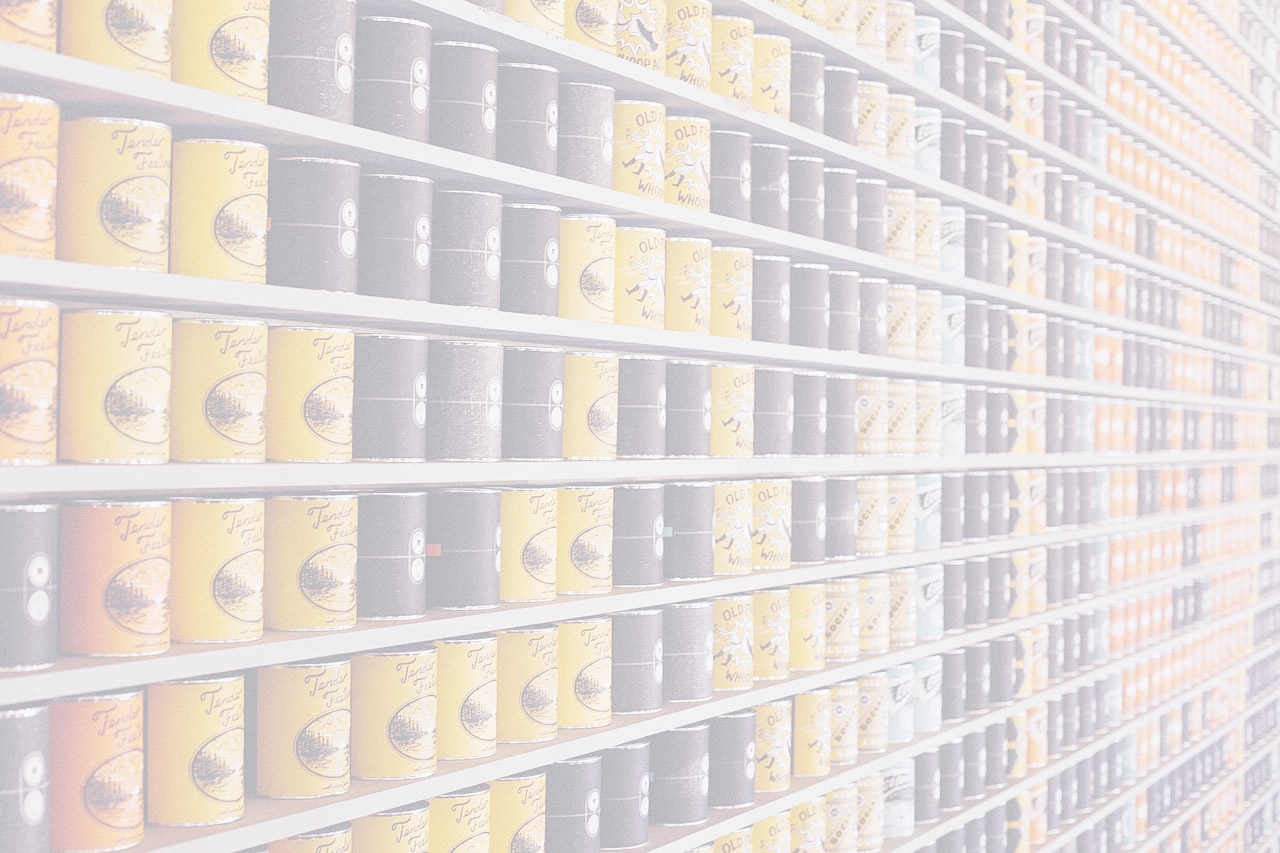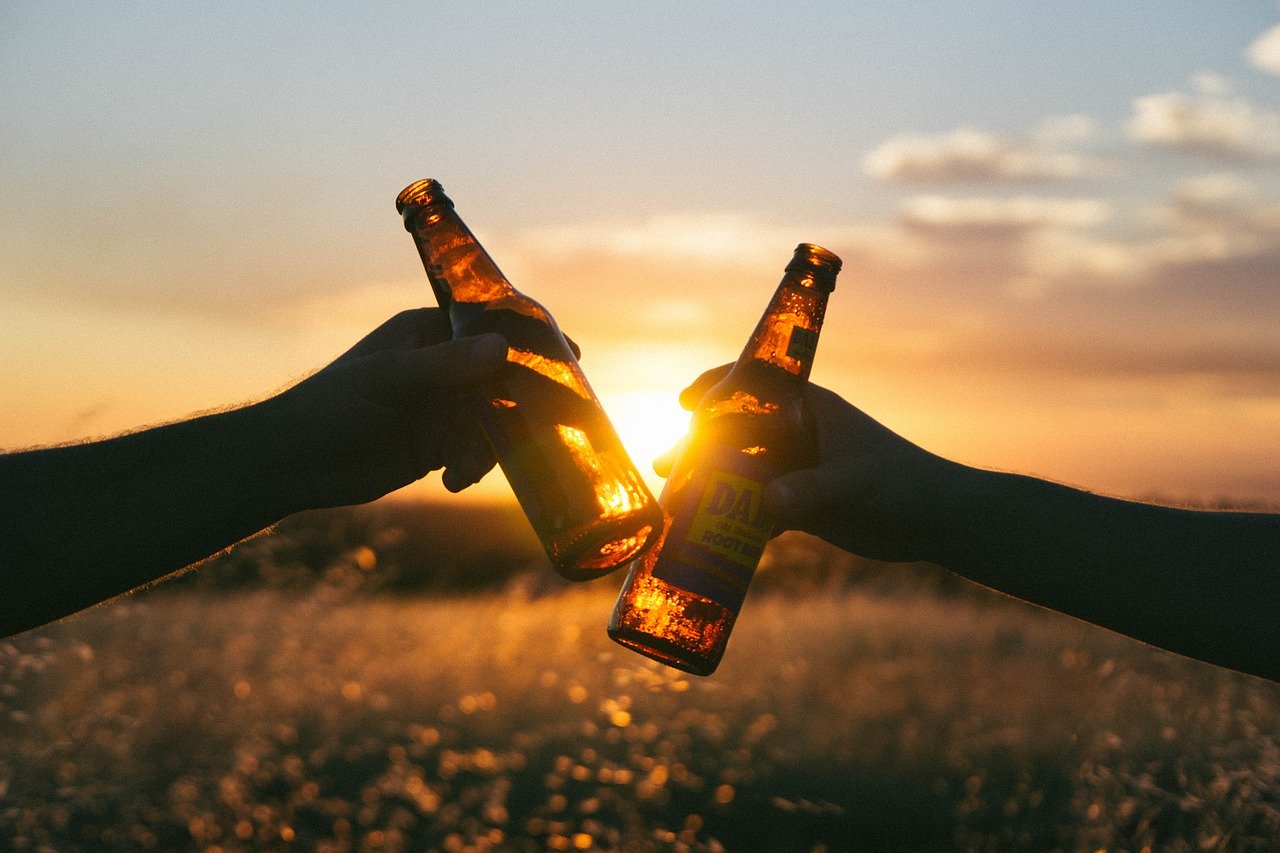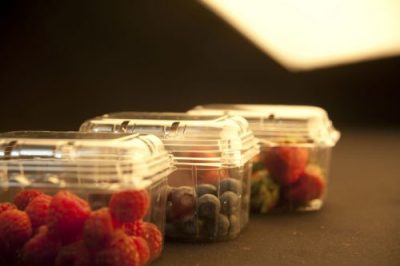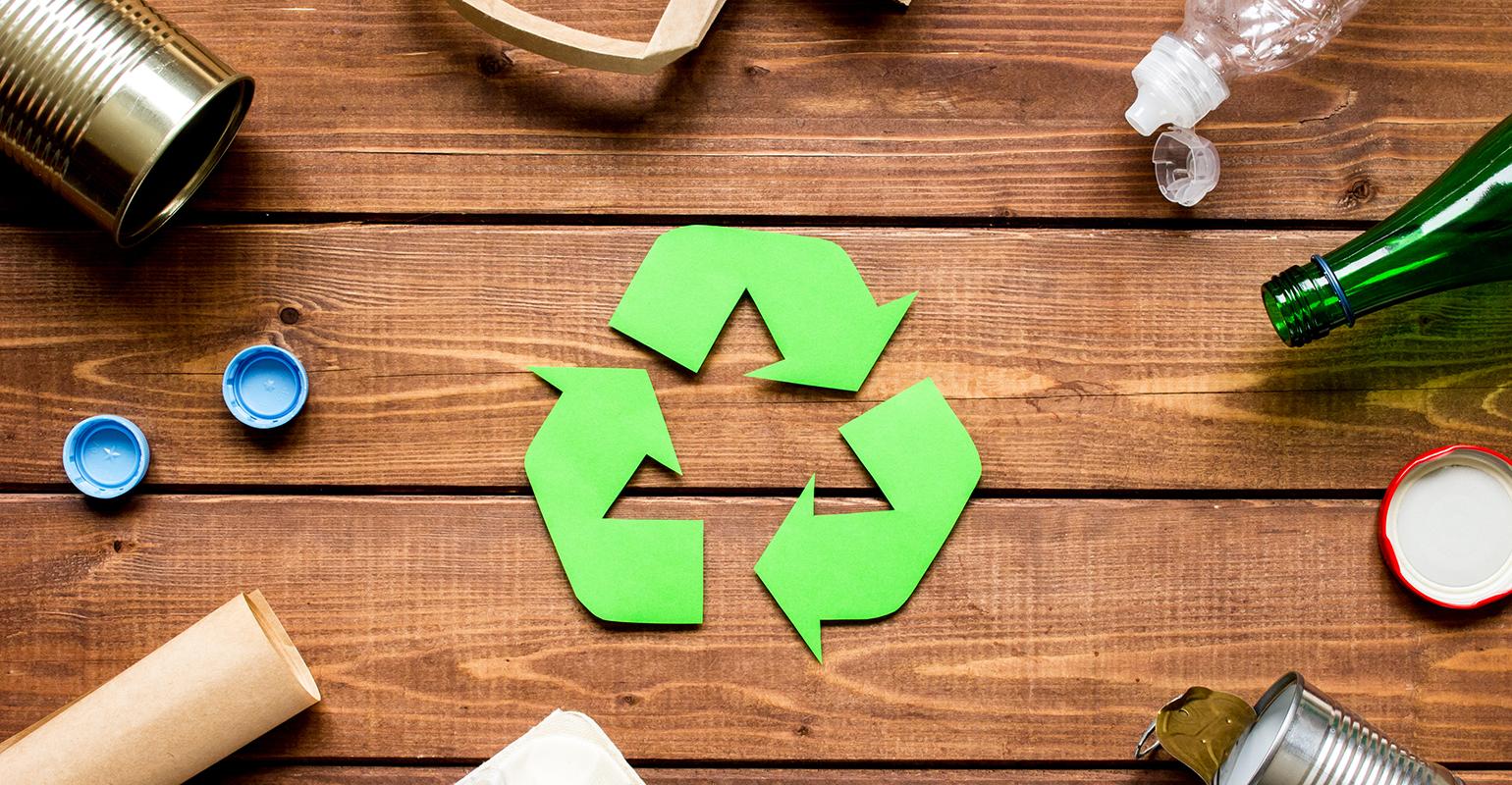Meaningful truth about Food Packaging You Need to Know
Introduction
In today’s thriving food packaging market, it’s more important than ever to find quality solutions.
Food packaging lies at the very heart of the modern food industry and very few foods are sold unpackaged.
Good packaging prevents waste and ensures that the food retains its desired quality throughout its shelf life
With the growing demand for food products, it’s essential to find reliable packaging that will protect your goods.
In this article, we’ll cover the following topics so you can make an informed decision about your next packaging purchase:
- the packaging market
- the importance of food packaging
- food packaging requirements in the UK
- food packaging innovations and solutions in the trend
- and more
Take your time and check them all out below.
The food packaging market
As data reveals, every year there are billions of dollars spent on packaging food and other items.
In fact,60% of all packaging stuff contributes to food products.
Earlier in the 20th century, most foods come without much packaging. People weighed and measured them directly and then placed them in bags. Or collect them with the shoppers’ bag and carry them home.
At that time, packaging was still a strange term for most people.
But today, packaging has become a massive and lucrative industry, given the increasing demand for food packaging products.
And often, it is the look of the packaging that persuades the customers to buy the food inside. Guess you might have a similar experience as well.
As a result, the food packaging industry is thriving currently.
Find more about the packaging market.
In today’s society, food packaging has become more than just a way to protect food from contaminants. It is also an important tool for preserving the freshness and nutritional value of food. In fact, advances in food processing and food packaging have played a major role in keeping the U.S. food supply among the safest in the world.
However, packaging technology must strike a balance between these various concerns, including energy and material costs, increased social and environmental awareness, and strict regulations on the disposal of pollutants and municipal solid waste.
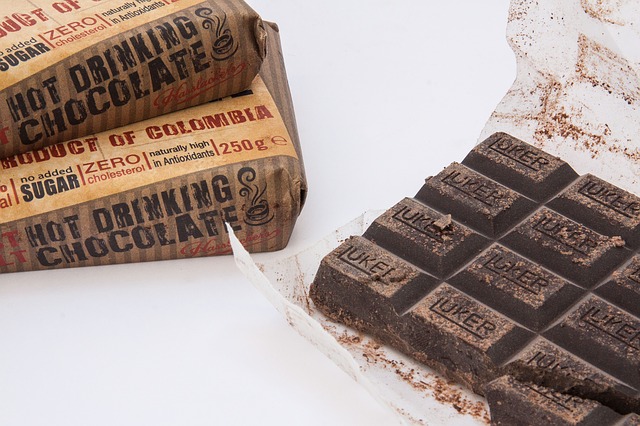
Why food packaging is important?
Because food packaging can help you with so many things you might not even realize before. A nice food packaging solution can:
Protect your food
Quality food packaging can protect your food from damage or contamination. On the other hand, food without proper packaging can be bad for many factors, typically micro-organisms, air, moisture, and toxins. Food packaging can delay product spoilage, retain the beneficial effects of processing, extend shelf life, and maintain or improve food quality and safety. In this case, packaging protects against three main external influences: chemical, biological, and physical.
Many products, especially food require more extra care than the other goods in many cases. They need protection against falling, crushing, and pushing during transport, the fruits for example.
In this case, a rigid package like a laminated container would definitely be a great helper. The container will make your fruits stay close together and protect them. As the saying goes, unity makes strength, this gives them enhanced strength against the force.
In the meantime, you need good food packaging solutions with nice performance against the climate. Factors like temperatures, light, and humidity can all affect the shelf life of the food.
Make your food stand out
As we discussed above, there are times you buy the food because of its beautiful looking.
So, excellent packaging with creative designs can really make your food products stand out and boost your sales.
At the same time, food packaging as a media itself can contain lots of information. That is to say, advertising on the packaging is another way to have customers identify your products among the many.
We believe you can recognize to forget the famous coke brands on the shelf. And the way their companies do the packaging just contributes a big part to that. The shapes, the logo, the color, and all other elements comprise the whole thing. Food packaging serves as part of the quality of your products today.
Ease the transport
When it comes to transport, the convenience to move is also important besides protection during the process.
Thus, a good solution for food packaging is easy to handle, such as moving and lifting.
At the same time, space also matters for transport. Sometimes, you just hope that box can fit into space and complete a full lorry load at a time. For cases like that, you’ll need packaging solutions that could tailor to your need. A well-designed food packaging can contain more products with the same materials and cost.
Innovations in packaging have made it easier than ever to cook an entire meal with little preparation time. For example, cookie makers recently introduced soft bags that feature notched sections for easy access during cooking and sealing-these are perfect if you want quick snacks on hand! The new cap design also allows products like food cans or bottles to be opened without destroying their contents because of how easily resealable these types can get when compared to other models available before now. A sealing film with a peelable seal covers the opening prior to sale and allows resealing after opening. Modern retail formats provide consumers with the convenience of one-stop shopping and the availability of food around the world, but this also means that more packaging waste needs to be disposed of.
A packaging that saves space brings you money, given the increasing price for space today. In other words, you will save the cost of transport with suitable food packaging solutions.
Offer useful information
As you know, you can find plenty of useful information on food packaging.
The ingredients, use-by dates, manufacturing information and etc.
And the barcode as well, which is very important for shops and supermarkets. Today, we’re all used to the check-out process at the cashier. Remember the barcode scanner?
But think of the scenario, if there’s no barcode on it, how much more time are we going to spend? Too hard to imagine right? And the food packaging is the thing to display the barcode. We guess you rarely see a barcode on the food itself, don’t you?
All these factors lead to the growth of the food packaging demand. Along with the increasing needs, there are requirements for food packaging.
The importance of designing excellent packaging for your product can not be overstated. Packaging might seem like a minor detail, but it’s what first catches people’s attention when they see the beauty or uniqueness in front of them on store shelves across America!
The way we package ourselves speaks volumes about who are as an organization–from our name all the way down to how much information is written on each label so customers know exactly why buying this particular preferred brand will make their lives easier.
Now let’s check the case in UK.
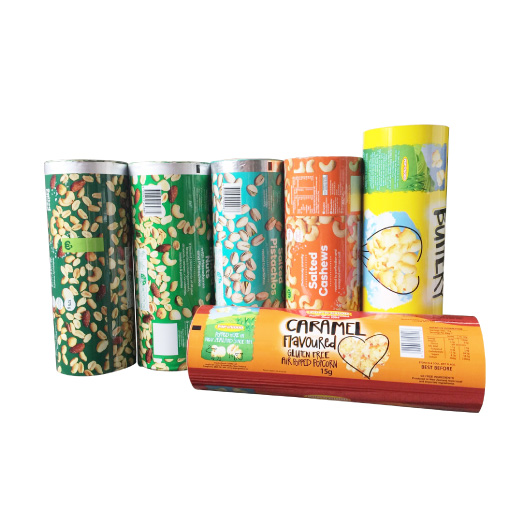
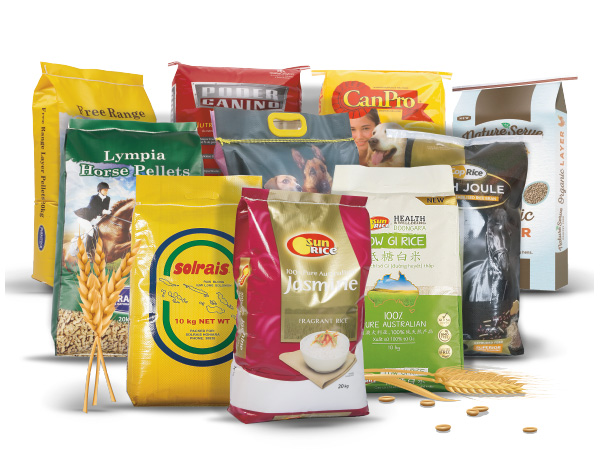
Safety and packaging standards in the UK
Who develops the standards for UK food and food packaging?
FIC does. March 24, 2021 – England’s Food Information Regulations 2014 enable local authorities to enforce European food information for consumers.
What are the food packaging requirements?
Food safety is always an issue worth our undivided attention.
It is important to make sure the packaging is safe for food products. If you’re doing a food business, the case matters more for you.
Find more details in the following content.
According to Standard 3.2.2 – Food Safety Practices and General Requirements, a food business must:
- Use packaging materials that fit its intended purpose
- Use material unlikely to cause food contamination
- Make sure food safety during the packaging process and guarantee no contamination during the process
The risks during the packaging process
There are chances the food becomes unsafe due to food packaging mistakes. For instance, the following cases can damage food quality.
- some pollutants get into the food during the packaging process
- hazardous bacteria infected the food from damaged packaging
- the packaging debris or fragments break off and then enter into the food, typically plastic or glass pieces
- poisonous substance from the unsafe packaging dissolves and stains the food
Food packaging is an essential part of any successful food business. It’s important to ensure your products are safe and potent, which means finding the best quality materials for their intended use – like avoiding chemical exposure or bacteria growth when possible!
Reduce the risks by choosing the right packaging solutions
Here are a few tips and principles for your choice:
- always use food-grade and clean packaging
- make sure the food packaging is complete and not damaged
- buy from reliable suppliers like PrimePaclearn the ingredients of your food and double-check the packaging, make sure it is suitable
- ask your packaging suppliers for certifications of their packaging products as the proof of food-safe quality
- pay attention to the instruction and symbols on the packaging, and make sure the food packaging fits your needs
Use packaging in the correct ways:
- think further in advance about where to store the packaged food. And make sure the packaging solution is safe enough for the food
- handle the packaging with care and clean hands
- store the packaging in a clean place and double-check the environment to avoid damage
- always use proper ways to clean and sanitize the packaging. And ensure the methods have no impact on food safety
- always avoid re-using single-use packaging and reuse packaging only if safe for the food
- use enhanced packaging solutions to avoid chemical leaching in the case of any risks
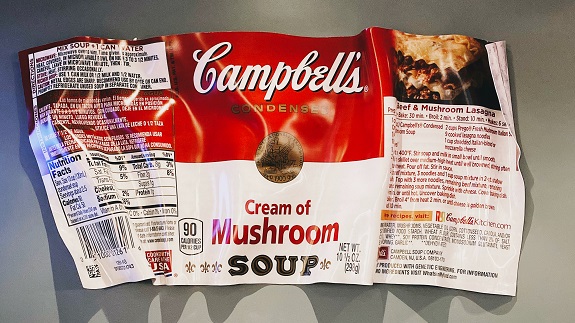
Food packaging labels
To sell food and beverage products, labels must be:
Clear and easy to read
Timeless
Easy to understand
Easy to see
Not misleading
If you sell food in the UK (England, Wales, and Scotland), you must also provide the name and address of the UK or EU business responsible for the food information.
If the business is not located in the UK or EU, you must provide the name and address of the importer.
Why do we need food labels?
Food labels provide us with information so that we have a better reference for buying the food, typically the following items:
- the food description
- ingredients of the food in detail
- information for nutrition
- use-by date or best before date
- instruction like ways to store and prepare
- warnings if the ingredients are likely to cause allergy
Requirements for food labeling
When it comes to the requirements for food labeling, the following information is necessary to display according to the Code by FSA. And that applies to food packages for retail sales and catering purposes.
Name or description of the food product
Well, the name or description of your food must appear on its package labels. And this information should be clear enough so that you can identify it apart from all other foods in similar categories.
The food we buy has to be correctly labeled and advertisers are responsible for the accuracy of their labels. They shouldn’t display fake information or misleading so as you can avoid being tricked into buying something harmful to your health.
Name and business address for suppliers of UK or New Zealand
The food package labels should show the name and the UK or New Zealand business address of the suppliers.
And the term “supplier” refers to the following roles:
- packer
- manufacturer
- vendor (the business that sells the food)
- the importer (the business that brings the food into the UK)
And the requirement of the business address is worth our attention. The address MUST BE a PHYSICAL ADDRESS and NOT a POST OFFICE BOX.
Ingredient listing
The food packaging labels should list all of the following items unless with exemption:
- ingredients (any substance, including all additives added to the food during the whole process from preparation, manufacture to handling the food)
- compound ingredients (any ingredient comprising more than 1 ingredient, like egg noodles. Typically, egg noodles are made of flour, water, and egg.)
And there are requirements for the displaying order of the ingredients and compound ingredients. Manufacturers must display them in descending order.
At the same time, the names of the ingredients should be detailed enough to describe them. And make sure they are correct as no misleading or deceptive information is acceptable.
The date marks
Pretty easy to understand, the food package should have a dark mark on either item below:
- The best before date is a reminder that the food might remain safe to eat after this point. However, you should always take care of your groceries and use them quickly or else they’ll start going bad which costs us money in lost produce value.
- use-by date. This date refers to the safety deadline for the food. That’s to say, if you eat the food after that date, it is risky for your health. And any food is not allowed to sell after the use-by date.
The date marks rules apply to all packaged foods with a shelf life of 2 years or less.
Lot identification
Lot identification can identify:
- the production batch of this food
- the place of packaging or production of food.
If there is a food safety problem, then this information will play an important role in the recall of products.
However, marking the date and supplier’s detailed address information usually meets this requirement.
Besides, some foods do not need to be labeled with batches, including:
- ice cream/rock candy separate section
- small package food. Batch identification is included when bulk packages or containers for sale are stored or displayed.
Directions for use or storage
If you don’t know the potential threat of certain foods to your health and safety. Then the food label of these products must include instructions for use and storage.
Follow these instructions to ensure food safety before use within the shelf life. For example, “refrigerate after opening” or “store away from sunlight.”
Nutrition information panel
The nutrition information sheet will give you a detailed introduction to the nutrient content of the food. It includes:
- protein
- energy (kilojoules or calories)
- saturated fat
- carbohydrate
- sodium (salt)
- sugars
- fat
There is a standard format for this nutritional information, which shows the average nutrient content per serving and per 100 g (or 100 ml, if liquid) of food. If you want to know more about standard 1.2.8 and nutritional information requirements, you can refer to FSA.
Percentage labeling
If the key ingredients are already mentioned in the food description. Then, the label of some packaged food must show the percentage of “characteristic” ingredients in the food.
For example, if there is a yogurt called strawberry yogurt, the producer must list the percentage of strawberries in the yogurt ingredient list.
Country of origin
Food packaging labels must indicate the country where the food is manufactured or produced, or specify that the product is made from local or imported raw materials.
If the ground meat coIf you sell meat, fish, or seafood products to end consumers and mass caterers then the country of origin label must be included on your packaging.
You can also use an alternative label in some cases instead if full compliance with this regulation from a batch from more than one country/region, please label the product with:
If the country/region does not include the UK, then “Country of origin: Non-UK”
If the country/region includes the UK, then “UK and Non-UK”
For ground meat sold in the UK, you can continue to refer to “EU” and “non-EU” until September 30, 2022.
From October 1, 2022, you must use “non-UK” or “UK and non-UK” when the label does not list each country of origin.
Legibility requirements
To facilitate consumers to easily understand the label information on food packaging. The label must be simple, clear, and comprehensive, and it must be in English. It is also important that the font size of the food warning statement must be greater than 3 mm high, and for small packages, it must not be less than 1.5 mm.
If you want to know more, the FSA user’s Guide on legibility requirements for food labels contains more letters that you can check out.
Other labeling requirements
nutrition claims (Standard 1.2.8)
- health claims (Standard 1.1.3, clause 1)
- irradiated food (exposed to radiation) or food containing ingredients that have been irradiated (Standard 1.5.3)
- vitamin and mineral content (Standard 1.3.2)
- certain milk products and royal jelly (Standard 1.2.3, clauses 3)
- genetically modified food (Standard 1.5.2)
- infant formula labeling (Standard 2.9.1)
- novel foods (Standard 1.5.1).
Exemptions from labeling requirements
Here are some of the less commonly used food labels:
- Food without packaging
- Inner packaging food. They are designed for sale only and generally have no outer packaging. But if there are separate parts of certain substances, people have to make oral or written statements
- Food is produced, packaged, and sold on-site at a sales location.
- Food packaged in the presence of customers
- For whole or chopped fresh fruits and vegetables (except germinated seeds or similar products), customers can see the status and quality of fruits or vegetables through packaging.
- According to the requirements of customers, provide packaged ready-to-eat food.
- Food sold in fundraising.
Even if you produce food that doesn’t need to be labeled. The code also requires you to tell customers some information about food, either orally or in writing, at the time of sale.
Warning and advisory statements
Advisory statements
For certain foods or ingredients that may pose health risks to certain consumers, suppliers must provide advisory statements.
This kind of food or ingredients are:
- If the food contains strong sweeteners, the supplier must indicate that the food contains phenylalanine. Because phenylalanine may affect the health of patients with phenylketonuria who have a rare genetic disease.
- Guarana or guarana extract. For foods containing guarana or guarana extract (a natural source of caffeine), the supplier must indicate that the food contains caffeine.
- As long as the food contains added phytosterols (which may reduce cholesterol absorption), the supplier must state the following on the label:
– when eating this product, people should match it with healthy eating habits,
– this product may not be suitable for children under five years of age and pregnant or lactating women, and
– Phytosterols do not provide additional benefits when ingested more than 3 grams per day.
- For cola drinks containing caffeine, the supplier must indicate on the label that the product contains caffeine.
Warning statements
When food suppliers know that their products pose serious health hazards, they must attach warning statements to these foods. For example, Bee product royal jelly contains an ingredient that can cause severe allergic reactions in some people and even lead them dead if not handled properly by medical professionals who are aware of this issue with behaved Kirkpatrich cream.
Full list of advisory statements
In addition, the code of food standards requires Advisory statements for certain products. Find the full list on https://www.foodstandards.gov.au
More about the labels
Check if you need a poultry optional indication certificate
You must ensure that each shipment is accompanied by a poultry meat optional mark certificate issued by the GB competent authority if you meet any of the following conditions.
Export of poultry meat from the UK to the EU with one or more optional signs (frozen or farmed method signs).
Shipments of poultry with one or more optional indications from the UK to Northern Ireland.
From 1 July 2022, you will need an optional indication certificate from the EU competent authority to import poultry meat with one or more optional indications from the EU to the UK.
Allergic issues caused by the food
Food allergies are common to see in our daily life. If you’re allergic to some food, you might understand the feeling more than anyone else.
And the typical food allergens include wheat, soy, sesame seeds, nuts, eggs, milk, fish, etc.
It might be easier to avoid them if you know them in advance. But there are times allergies occur to you even before you realize it. The reason can be getting the wrong food into the stomach.
So, it’s important to display the potential allergens on the food package label.
Don’t forget that especially when you are running a food business. Some allergies can even kill.
So, always be careful when listing the ingredient information on the food package.
Ingredient lists and percentage labeling
Ingredient lists
The supplier must list the ingredients in descending order of weight.
This means that when suppliers produce products, the first component contributes the most and the last one contributes the least. For example, if sugar is at the top of the list, sugar accounts for the largest proportion of the product.
If the product contains added water, the supplier must list it in the batching table according to its feed weight. Also, any water lost during processing (e.g. water lost in the form of steam) should be noted by the supplier. The only exception is added water:
- less than 5% of the finished product,
- being part of the broth, brine, or syrup in the ingredient list, or
- for the reconstruction of dehydrated components.
Sometimes, foods contain compound ingredients. The producer mixes two or more ingredients. This is the compound ingredient. For example, ketchup can spaghetti, which is made of flour, eggs, and water.
And the supplier must state all the ingredients that make up the composite components in the table.
Unless the amount of this compound is less than 5% of the final food. For example, one compound that may be less than 5% of the final meal is tomato sauce (made of tomatoes, peppers, onions, water, and herbs) on a frozen pizza.
However, if the composition of the compound is a known allergen. No matter how much of this ingredient you use, you have to label the food package.
Percentage labeling
The supplier must label most packaged foods with the main ingredients or percentage of ingredients in the food. Then consumers can compare similar products.
The main ingredient of strawberry yogurt is strawberry. The label says, for example, 9% strawberries. Another example of a typical ingredient is the cocoa solids in chocolate. There are also foods, such as white bread or cheese, which may not have characteristic ingredients or characteristic ingredients. It’s all possible.
Nutrition, health, and related claims
On January 18, 2013, a new standard to regulate nutrition and health claims on food labels and advertisements became law. Food companies must comply with the new standard (standard 1.2.7 – nutrition, health, and related statements) until January 18, 2016.
Health claims
Safer Food, Better Business (SFBB)
Food safety management procedures and food hygiene regulations for small businesses.
As a food business, you and your employees need to maintain good personal hygiene.
This fact sheet provides you with information on how to ensure the safety of your employees and the food you serve.
The Safer Food, Better Business (SFBB) package includes information on
Cross-infection
clean up
No Chills
Cooking
Management
Use diary
A practical and easy-to-use package will help you too.
Comply with food hygiene regulations
Demonstrate what you are doing to prepare food safely
Train your staff
Protect your business reputation
Improve your business
Improve your food hygiene score
Self-verify: notifying established food-health relationships for general level health claims
If food companies can self-verify the food-health relationship, it can help enterprises to make general-level health statements.
However, businesses need to self-certify food health relationships before they are declared on food labels or food advertisements.
At the same time, the company should inform FSA of this relationship.
Also, FSA maintains a list of food hygiene relationships. This is the public record of food companies. This suggests that these businesses choose to self-confirm food health relationships to support general-level health claims.
Also, a food business cannot use a relationship on another food business’s notification list. If a food business wishes to file a general health claim based on a listed relationship, it must conduct its own systematic review. And inform FSA of this relationship.
Who checks nutrition content claims and health claims on labels?
For England, DHSC is responsible for nutrition labeling, while the Welsh Government in Wales and the Scottish Food Standards Agency are responsible for Scotland. Local authorities enforce these regulations in England, Wales, and Scotland.
Presentation of nutritional information
Nutritional information should be presented in
In a tabular format with numbers aligned
Where space does not permit, statements may appear in a linear format
Energy values must be expressed in kilojoules (kJ) and kilocalories (kcal), and nutrient amounts must be expressed in grams (g)
All elements must be in close proximity to each other. These elements must be presented together in a clear format and, where appropriate, in the order of presentation as specified in Annex XV of the EU FIC. Nutritional information must be expressed in units of measurement per 100 g/ml using the units of measurement specified in Regulation 1169/2011
Vitamins and minerals must be expressed as a percentage per 100 g/ml and as a Reference Intake (RI)
Pre-Package Nutrition Labeling Consultation
In Northern Ireland, the FSA is leading the “multiple traffic lights” in front of the current UK package nutrition labeling scheme. The scheme is seen as an important tool to support consumers to better understand the nutritional content of their food and drink.
In partnership with the Department of Health and Social Care (DHSC), Food Standards Scotland, and the Welsh Government, the FSA launched a four-nation consultation on package nutrition labeling in July 2020.
The aim of the consultation is to gather views and evidence to help inform any future improvements to ‘multi-traffic light’ labeling and to ensure that UK labeling remains the most effective in informing healthier choices.
Truth in labeling: measures, weights, and legibility
Truth in labeling
UK food law requires food companies to label their packaging. The labels placed on the package by food enterprises shall not mislead consumers through false, misleading, or deceptive statements.
Under the Northern Ireland Protocol, goods sold in NI continue to follow EU rules for food labeling. There are changes to labeling that apply from 1 January 2021
However, the UK government recognizes that businesses will need time to adapt to these new labeling rules.
The UK government is working with the Department of Agriculture, Environment and Rural Affairs (DAERA) and district councils in NI on an enforcement approach of new labeling requirements on the NI market that takes these challenges into account.
In line with previous rule changes for labeling, there’s a proportionate and risk-based enforcement approach particularly for:
- identification marks
- Food Business Operators (FBO) address requirements
- ‘UK(NI)’ origin labeling requirements
Name or description of the food
The supplier must label its exact name or description on the package of the food. This can indicate the true nature of the food.
For example, “strawberry yogurt” should contain strawberries. If it’s strawberry yogurt, not real strawberry. Then the supplier should indicate on the label is strawberry yogurt.
Weights and measures
Weighing and measuring are some of the most important pieces of information about food. Therefore, the supplier must attach accurate weight and size information (quantity of food in the package) to the food.
Legibility requirements
Food standard specification requires that the label must be clear and eye-catching. And it is different from the background and uses English.
Next, the size of the text in the food warning statement must be no less than 3 mm high.
Also, unless on small packages, the type size must be at least 1.5 mm.
Food packaging innovations
The growing global environmental pollution has caused us to rethink how food is packed.
A recent study by the EPA found that nearly 45% of US landfills are dedicated just to discarded packages related to foods we don’t eat anymore, making it one major component among other things such as paper products or plastic bottles.
We should be aware that using sustainable food packaging is no longer just an option for individuals. Instead, it has become an urgent need to protect the global environment.
Many people are trying to reduce the amount of food packaging they bring into their houses.
But soon they will find that it’s not an easy task.
Food packaging is an area where everyone can take action to reduce the amount of waste they produce. Private individuals should try their best not to use too many food packages,
While businesses and political entities also have a responsibility in this matter by taking joint efforts with each other for success!
Innovations in sustainable food packaging are leading us a further step to a sustainable life.
Meanwhile, we still have a long way to go for a fully sustainable goal.
And the good news is, that more and more businesses are adopting new materials. At the same time, government policies also help to accelerate progress.
And PrimePac is one of these businesses with the honor to pay our effort to a society with less waste.
Why do we need innovations in food packaging?
Most of the food we buy now needs plastic wrapping and packaging. It’s useful, right?
But its harm is also obvious–plastic will bring a heavy cost to human beings as well as our environment.
Making plastic requires a large amount of limited and heavily polluting fossil fuels. Research by the Pacific Institute, a global water organization, provides some background.
In one year, the production of plastic for bottled water that Americans bought, consumed a lot of fossil fuels. These fossil fuels are equivalent to about 17 million barrels of oil. As we all know, the heavy use of fossil fuels will make global warming more serious.
So, to deal with the climate crisis, it is important to reduce plastic use, especially the use of single-use plastics.
Moreover, the plastic issue has created some other issues. One of the famous is the pollution of water.
So, environmental organizations believe that recycling plastics is a way to deal with plastic waste. They encourage people to recycle plastics.
By recycling plastics, we can reduce the number of new plastics that will be made.
What’s more, we can move away from a throw-away society towards a circular society, balancing environmental and economic development.
But the fact is that recycling alone is not enough. It can only be a partial and incomplete solution.
Not enough just to recycle plastic food packaging
- One of the reasons is that most plastic food waste in our homes is not recyclable, such as some black plastic items. These plastics cannot be recognized by grading machines at recycling centers. So, it’s necessary to think of other ways to deal with these non-recyclable plastics.
- The second reason that recycling plastic is so expensive, laborious, and energy-intensive? It uses nearly double the number of resources as simply throwing away old bottles. Plus all this work has an environmental cost – like trucks driving around with full tanks producing carbon emissions on our roads.
- One more reason, we can only recycle most plastics once or twice before they are down-cycled. Down-cycled means to be recreated into some lower-value items. Recycling companies turn plastic into fabrics because plastics will not be recyclable after several uses. Obviously, fabrics have a higher value. It is more profitable to turn plastic into fabrics. But it is worth our notice that some clothes made from plastic bottles can no longer be recyclable.
And when plastics enter landfills, they will break apart over time. But the process will usually continue for centuries.
So, next time when you think that buying recyclable plastic items is environmental-friendly, please remember that recycling plastics is usually a one-or-two-time process.
The bio-plastics thing
Many innovations in sustainable food packaging use the idea of bioplastics.
Bio-plastic, also called biodegradable plastic, is a kind of plastic that will break down over time. It is unlike traditional plastic polymers.
Such plastics can be broken down by some living organisms, such as bacteria. And researchers believe that bioplastics can be an effective solution to most of the problems of plastic waste.
As we mentioned just now, most plastics will not break down naturally in the environment or will take several centuries to break down.
So, the existence of traditional plastics will create a waste crisis that will last for generations. Compared with traditional plastics, bio-plastics take a very short time to break down.
Renewable Natural Bio-plastics or Synthetic Bio-plastics?
There are two types of biodegradable plastic.
One type is bio-plastics and the other type is biodegradable synthetic polymers.
Bio-plastics are made from renewable raw materials. On the other hand, biodegradable synthetic polymers are made from petrochemicals. They contain biodegradable additives to make the break-down process faster.
You might feel confused about the terms “biodegradable” and “compostable”.
Biodegradable material can break down into some fragments, while compostable material can break down into useful compost. So, biodegradable plastic may remain inorganic compounds during the break-down process.
But a fully compostable plastics, on the other hand, will break down without leaving any inorganic compounds in the environment.
We have talked about the features of different types of bio-plastic. And the features determine whether the type of bio-plastic is the most eco-friendly and sustainable choice.
The Best Bio-Plastics:
Are fully compostable
Imagine a world where all of your plastics were bio-degradable and even compostable. You could throw them in with regular trash without worrying about harming the environment because they would break down into carbon dioxide, water vapor (or other substances!) meaning these new “bio” derived materials are simply part two – alongside organic foods–of an eco-friendly lifestyle.
Unfortunately, the synthetic polymers are imperfect yet. They will leave behind harmful inorganic compounds that can’t be broken down by bacteria as true bio-plastics do! But we’re on a mission to improve these plastics so they don’t include any more unwanted solid waste for you or me – just one less type of puzzle piece thrown out with your day’s trash at home.
Usefully sustainable, eco-friendly, natural raw materials
The environmental benefits of using bio-plastic are vast, with a truly green material able to be created from resources that would otherwise go into producing food. This can help reduce energy and water consumption within agriculture while also reducing carbon emissions if it’s compostable.
Manufacturers would like to use non-renewable fossil fuels to produce synthetic plastics. It harms the natural environment a lot and also contributes to global warming.
Bio-plastics that are made of renewable resources can be carbon neutral and will degrade completely, but the production process still impacts how environmentally friendly they really are. Some biodegradable plastics have been shown to release harmful compounds into our environment so it’s important for you to consider all factors before making your decision on what type is best.
Bio-plastics have many advantages, but there’s always a downside. For example; the best bioplastics will release methane when they’re burned in landfills– so if you want to be eco-friendly and green with your environmental footprint consider not using them or processing natural materials by small household compost systems instead!
Compostable series are available on PrimePac now. Contact us and get a quote.
Food packaging solutions in the trend
To protect the environment, a good way to reduce the carbon footprint is to choose environmentally friendly packaged takeout food and drinks.
Let’s take a look at the following raw materials that can be used to make fully compostable polymers, which will help to better understand the innovation of bioplastics:
Food packaging with eco-friendly plastic
Potato starch, corn starch, and other first-generation bioplastics feedstocks
Several plant materials can provide cellulosic materials for bioplastics used in the packaging of the global food system.
Also, a series of potato starch, corn starch, and other plants have been used to replace synthetic plastics in food packaging.
However, the materials face criticism because packaging food with food-grade products means taking food from people and animals. With increasing competition for land, it has been criticized that the use of this material may be immoral in the face of global food shortages.
So, the long-term use of land to produce packaging rather than food might remain unsustainable.
Bamboo bioplastics for food packaging
According to the research conducted by INBAR, if people produce well, we can carry out a 100% bio base and complete biodegradation of bamboo plastic substitutes.
What’s more, bamboo-based materials can play an important role in the global bioplastics industry. People can produce about 2 million tons of bamboo-based materials every year.
One example of the second generation of bioplastics is bamboo bioplastics. Growers produce second-generation materials from non-food crops (cellulosic materials).
There are other examples, such as wood, awn, switchgrass, etc. The second generation of raw materials also includes wastes from the first generation of raw materials, such as waste vegetable oil.
Land use is the key to the sustainability of second-generation raw materials. We can’t use land suitable for food production to grow these bioplastic materials, which will affect food production.
So, we have to choose a land that is suitable for food production. And they should be materials that we can grow sustainably, with as little land, water, and other resources as possible.
Algae/seaweed feedstocks for bioplastic food packaging
Another innovation in bioplastic food packaging is the use of algae/seaweed. We call algae the third-generation raw material of bioplastics.
They have a higher yield and higher efficiency than the above materials. And they don’t need fertilizers, pesticides, herbicides, or land. Besides, like the materials mentioned above, they are naturally biodegradable.
However, it is difficult to use algae as raw materials for bioplastic food packaging on a large scale.
First of all, using seaweed or unicellular algae to make bioplastics is more expensive than other bioplastics.
Second, they are not widely used, and researchers need more information to study their applications.
However, in the future, algae-based bioplastics may revolutionize the bioplastics industry. They may play an important role in the development of food packaging.
Mushroom feedstock for bioplastic food packaging
The potential bioplastics base material we can use is not just plant materials.
Interestingly, we can use mushrooms and fungi to make bioplastics. At present, mushrooms and fungi have become another way to study biopolymers.
Besides, people have now replaced polystyrene with mushroom-based materials. Fungi may also have some other applications in the future.
Of course, bioplastics are not the only alternative to food packaging.
Now more and more people are doing research on food packaging with sustainable materials. Businesses and manufacturers are becoming more and more creative when packaging food with other sustainable materials.
For example, leaves, such as banana leaves, can be simply used to wrap vegetables, etc. Our innovation in food packaging materials may also revolve around reducing the total amount of packaging required.
Other eco-friendly food packaging options
Kraft paper
People can recycle 100% of the natural brown kraft paper containers. Because they are compostable and biodegradable.
Also, people use kraft paper to make food packaging has two flip and tray styles. They are simple and fashionable.
Therefore, when the store is using kraft paper food packaging box. Customers and passers-by will immediately know that you are an environmentally friendly organization.
Palm leaf plates and bowls
Palm leaf packaging is very suitable for mobile food trucks or mobile food stalls. There, customers are most likely to consume food or drinks near the food supply area.
Palm leaf plates and bowls are fashionable to take out packaging options. It’s suitable for festivals, fairs, markets and any kind of activity because the food there is on-site. Palm leaf packaging is made from 100% renewable and compostable leaves and water.
Thus, the palm leaf package does not contain any harmful toxins and will degrade naturally within two months after use.
Eco-sugarcane
Ecological bagasse sugarcane containers are 100% biodegradable and compostable. Most importantly, it’s affordable, not as expensive as bioplastics made from seaweed.
What’s more, it has a variety of styles. This includes a clamshell, a tray with a pot cover, and a soup bowl. Sugarcane packaging is made of bagasse, which is the pulp of sugarcane after juice extraction.
They are non-toxic and durable. They are very environmentally friendly materials.
You can evaluate each green takeaway packaging option to determine which style is best for your business. Just to remind you, you don’t have to choose only one style of packaging. In other words, you can mix and match different styles of packaging according to your needs.
There is no doubt that your customers will support you in reducing waste and protecting the environment.
More about eco-friendly packaging on Why Use Eco-friendly Packaging for Your Online Business.
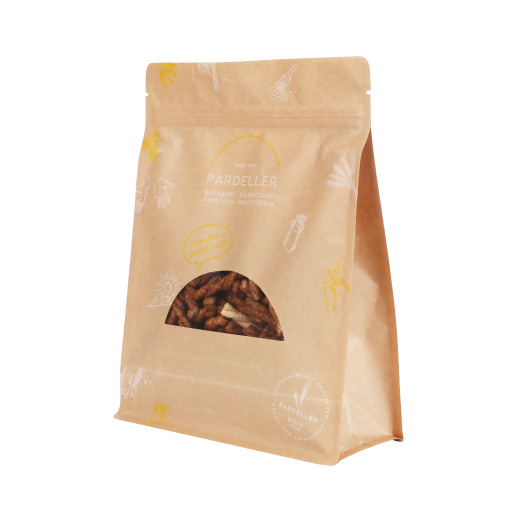
Sustainable packaging
Besides eco-friendly packaging solutions, sustainable packaging is another talking point in the packaging industry in the UK.
Sustainable packaging is the development and use of packaging which results in improved sustainability.
(source: https://en.wikipedia.org/wiki/Sustainable_packaging)
In other words, it means packaging with zero/less impact on the environment. Typically, recyclable, compostable, and reusable packaging. And it is a further step of eco-friendly packaging.
Find more about sustainable packaging in the Sustainable packaging industry in 2020.
What can we do as citizens around the globe?
To reduce the amount of food packaging we take home, we can make some changes. For example, we can:
- Grow at least some of our food to prevent food shortages due to the use of food packaging.
- Buy local, fresh, organic produce whenever possible. Instead of buying processed, pre-packaged foods, cook your own fresh ingredients.
- When shopping, we bring our own shopping bags instead of using plastic bags in the store. Similarly, when we buy takeout food, we also bring our own containers to hold the food.
- It’s a good idea to make an initial list of what you want before going shopping so that when it is time for buying things, your funds are committed.
- Replace retail purchases with wholesale goods, or shop in zero-waste stores as much as possible.
Conclusion
A quick review of the contents above. We’ve discussed the following things in this article:
The packaging is important because nice packaging solutions can protect your food, make your food stand out, ease transport, and offer useful information.
The requirements for food packaging in the UK, including safety and packaging standards, and the detailed requirements for food packaging labels.
Food packaging innovations are greatly in need. And recycling is not enough to solve the problem while bio-plastic is more friendly to the environment.
We also talked about trendy food packaging solutions today. That includes the eco-friendly plastic family members: plant starches, bamboo bioplastics, algae/seaweed feedstocks, and mushroom feedstock. And other eco-friendly food packaging options such as kraft paper, palm leaf plates, bowls, and eco-sugarcane.
Besides, we also talked about one of the major talking points in the industry: sustainable packaging.
And what we can do as citizens around the globe.
Like this article? Share to as many as your friends and enjoy it together. We appreciate it if you could bring them to our website and follow our blogs.
The Helpful Guide to Choosing Your Beverage Packaging
Introduction
The packaging of beverage products is more than just a pretty box. It’s an integral part of launching new items, acting as the interface between you (the producer) with consumers who will buy what they see or touch firsthand!
Quality beverage packaging solutions are in great demand nowadays, given the growing need for beverages.
This ultimate guide is going to help you if you are:
- a packaged beverage supplier
- involved with the beverage supply chain
- a supplier of the beverage packaging industry
- any other needs for beverage packaging solutions
The beverage packaging market
Studies revealed that the global beverage packaging market size expects to reach $133.3 billion in 2026.
A lucrative number, given the growing demand for a variety of beverages.
And as the final part of the beverage supply chain, the beverage packaging industry benefits from the ever-growing beverage industry.
When it comes to beverage packaging, it is a complex process due to the various beverage types and requirements. The reason is, different types of beverages require different materials and containers, for convenience or need to keep fresh. And beautiful designs to catch consumers’ eyes as well.
Factors boosting the beverage packaging market growth
Improved lifestyles and increased per capita income (mainly in developing economies) have promoted the consumption of packaged beverages. Thus, the demand for better and convenient packaging technology is promoted.
Convenience factors in the beverage packaging industry allow for reduced waste and increased packaging resealing capabilities in the distribution process. It also allows for increased portability and reduced weight. So, it helps to save costs and thus boost the beverage packaging market.
Moreover, in urban areas, the increase in per capita income and the decline in water quality have led to an increase in the global consumption of bottled or packaged water. At present, the bottled water market is one of the fastest-growing markets.
Therefore, the rapid growth of the bottled water market has also promoted the growth of packaging required for bottled water production.
Also, many manufacturers have updated their production technology and applied automation technology in the production process. Therefore, production efficiency has greatly improved.
At the same time, the quality of products has also improved. These factors together lead to the overall growth of the beverage packaging market.
On the other hand, growing concerns about obesity and high sugar intake are leading to packaging strategies.
For example, sodas, alcohol, and sugary drinks. In the future, ordinary packaging may hinder the market.
However, the application of bioplastics in beverage packaging will create favorable opportunities for the growth of the beverage packaging market.
Also, there are alternatives to bioplastics known as biopolymers. It is a polymer made from plant-based materials rather than petroleum-based materials. So, this enables bio-PET containers to degrade and reduce plastic contamination.
The non-alcoholic beverage market accounts for more than half of the global market share.
However, the demand for packaging solutions will also grow rapidly by 2026.
Competition Analysis
The main market participants described in the report include Amcor plc, Ball Corporation, Orora Limited, Reynolds Group Holdings Limited, Smurfit Kappa Group plc, SIG Combibloc Group AG, Crown Holdings, Inc., Mondi plc, Stora Enso Oyj, and Tetra Laval International S.A.
Many competitors in the beverage packaging market have taken product release as their main development strategy. They hope to expand their product portfolio of recyclable beverage packaging. For example, in July 2019, SIG launched the signature pack 100 in France. This signature pack 100 is a sterile carton. And it’s aluminum-free, made from plant-based and 100% biodegradable polymers.
Similarly, in August 2019, Amcor developed a new line of polyethylene terephthalate (PET) bottles for the Salzburg beer brand in Brazil. The new bottles can last for four months, and people can recycle 100% of them using existing recycling technologies. Besides, the bottle has a glass-like appearance and has a metal crown, which is very beautiful. This makes it more attractive to customers.
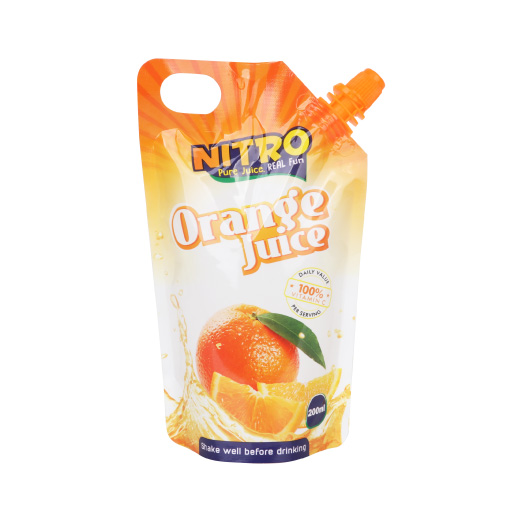
Why beverage packaging solutions worth our attention?
Beverage packages with proper designs can extend the shelf life of the beverage. That is to say, if you have the right options for your beverage packages, your beverages will live longer!
At the same time, a proper package solution can also save your material cost. And generate less waste to the mother earth.
Also, the packaging materials used for drinks include glass, polymer, metal, cardboard, and their combinations. The shelf life, chemical composition, and value of beverage determine what material the producer uses for packaging.
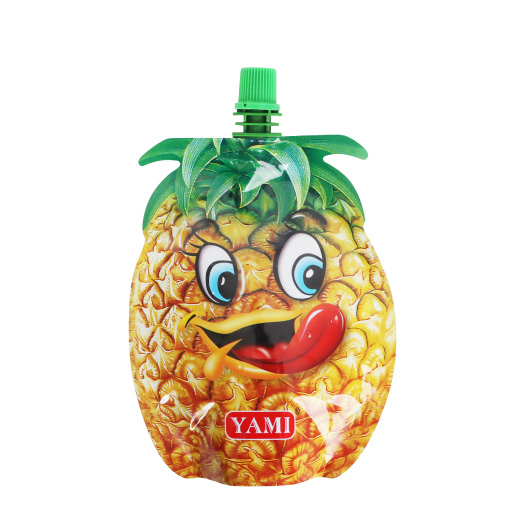
Types of beverage packaging
You need to decide which containers your beverages will be placed in.
You can choose from a variety of options, but keep these factors into account when balancing cost and availability as well as compatibility with formulation requirements for each individual beverage product line that you’re looking at targeting!
By beverage packaging materials
Glass beverage packaging
The advantages of glass beverage packaging are numerous. First, it’s non-toxic and tasteless – you can drink it with confidence! Furthermore, the safety is unparalleled.
Second, it is transparent. Then the glass beverage packaging will be very beautiful so that customers can see the appearance of the beverage. You know, it can stimulate their desire to buy.
The sealing of glass beverage packaging is very good in this way, to avoid the microorganism and chemical reactions that cause deterioration.
The common material for beverage packaging is glass. It’s affordable and easy to find, which makes it one of the more popular choices among packagers who want something that can be used without too much hassle or expense upfront cost-wise.
Glass is a great material to use for storing your drinks because it can withstand high temperatures, pressure, and cleaning agents. You’ll never need to worry about bacteria growing in the container with this type of glass!
Glass beverage packaging not only looks great, but it’s also environmentally friendly! Glass bottle recycling can save energy and reduce the waste capacity of landfills.
Thus, glass beverage packaging is the preferred packaging material for beer, fruit tea, jujube juice, and many other beverages.
The glass beverage packaging has some disadvantages. For example, it can make drinks heavy and difficult to transport due to the particularity of this material which makes it more expensive than other types for transportation purposes too.
Metal beverage packaging
Metal beverage packaging offers a great solution for businesses who want to keep their drinks cool and safe. It has the ability to block oxygen, water vapor as well steam while also being able to withstand high temperatures without breaking down or dissipating any flavor in your product!
At the same time, it can also block light, especially ultraviolet light. Therefore, it will not cause deterioration or a change of flavor.
The metal packaging of this product has made it easy to transport and store, which is why the company was able to increase its sales radius.
Then, the metal beverage container is not easy to get damaged and easy to carry.
Nowadays, many young people like metal beverage packaging, cans for food & beverage packaging with easy-open lids. However, it adapts to the fast-paced life of modern equipment and is widely used in tourism life.
One of the reasons why metal beverage packaging is so popular is that it is friendly to the environment.
These packages are made from a material that not only saves resources and energy but also eliminates environmental pollution. The metal can be scattered in your garden after corrosion without hurting anything.
Compared with glass beverage packaging, metal beverage packaging has more styles and a more beautiful appearance.
Metal containers are a great way to express your style and creativity. The beautiful metal luster, coupled with colorful graphic printing will make the gift you’re giving stand out from any other.
But its disadvantages are also obvious. First of all, its chemical stability is very poor.
Under the condition of acid, alkali, salt, and humid air, it is easy to rust. So, to a certain extent, it limits the scope of its use. Secondly, its price is relatively expensive and its economy is poor. However, this shortcoming is also gradually improved through technological progress.
Plastic beverage packaging
Plastic is a synthetic or natural polymer resin as the main material. After a special process, it can be used to package food and drinks.
The original container for beverage packaging was glass bottles, followed by paper composite cans. Later it became a PET bottle. Now rigid PET bottles are the biggest packaging materials for carbonated drinks and non-carbonated beverages.
Lightweight and convenient for people to carry, plastic beverage packaging is not afraid of breaking or damaging easily when transported over long distances.
It’s a great choice in situations where you need your drink fast but doesn’t have access to glass bottles like on beach trips!
With its strong acid and alkali resistance, this material is perfect for producing plastic beverage packaging. It also makes the process of manufacturing very easy to control.
However, when using plastic beverage packaging, you should pay special attention not to let it come into contact with vinegar or detergent.
At the same time avoid direct sunlight, high temperature, etc. To avoid chemical reactions between plastic beverage packaging and these things.
Besides, when you buy plastic tableware, you should choose the product with PE (polyethylene) or PP (polypropylene) label. And choose less decorative patterns, colorless, tasteless, smooth surfaces of plastic products.
Even though plastic beverage packaging is recyclable, it is disposable. Compared with glass beverage packaging which can be reused, plastic beverage packaging is a less environmentally friendly packaging option.
Paper beverage packaging
Paper beverage packaging is of low cost and lightweight. This makes it easy to carry, which is conducive to the transportation of logistics. In addition, the beverage packed with paper materials does not need to worry about metal dissolution and odor.
However, paper beverage packaging generally uses high-strength raw cardboard materials. This is because pure paper packaging materials are difficult to package drinks. Commonly referred to as paper beverage packaging. Almost all of them are paper-compatible materials.
Also, composite paper packaging is widely used in beverages, especially non-carbonated beverages. Among them, dairy products are the largest application field. Fruit juice, tea, and coffee are the most commonly used compound paper packaging in beverages.
The biggest advantage of paper beverage packaging is that it can be recycled and reused. This is very good for environmental protection.
However, the pressure resistance and sealing barrier of paper-plastic composite beverage packaging are not as good as glass beverage packaging, metal beverage packaging, and plastic beverage packaging. And it can’t be heated at high temperatures.
Therefore, paper beverage packaging in the preservation process will encounter many problems. For example, it will reduce the heat-sealing performance of PE film due to oxidation.
Or it will be because of creases, under the fiber hardening and other reasons become uneven, resulting in the appearance is not beautiful. It will even cause the filling molding machine difficult to feed the problem.
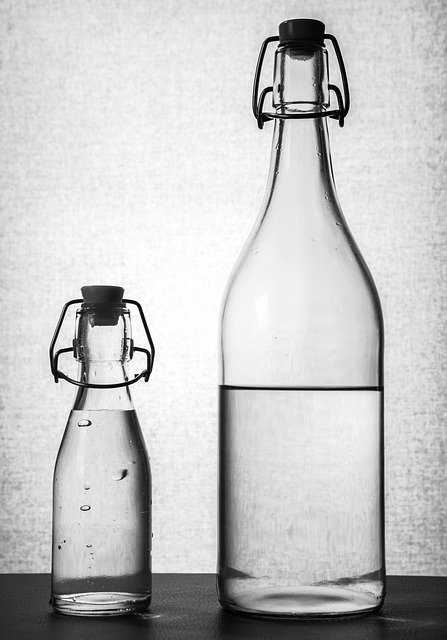
By packaging types
Beverage bottle packaging
The beverage bottle packaging is generally divided into glass bottles, plastic bottles, metal cans, and other types. Here we will introduce you to glass bottles, plastic bottles, and metal cans.
Glass bottles have obvious advantages, such as being environmentally conscious and not disposable packaging. The transparent shape makes them very beautiful; however, their disadvantages also stand out – glass is heavy so it’s difficult to carry around with you all day long or if someone bumps into us accidentally then there could be scratches on our clothes from broken pieces of jars!
Moreover, it is not convenient to clean if it is reused. If it is not cleaned, it is easy to cause cross-infection of bacteria and viruses. The material of a glass bottle is very special, and its price is high.
Now there are a lot of bad businesses, to reduce costs, will make fake glass bottles to replace the real glass bottles. And fake glass bottles are likely to have adverse effects on people’s health.
Compared with glass bottles, the cost of plastic bottles is very low. And it’s light and easy to carry. But the barrier of a plastic bottle is so-so, and it is easy to react with other chemicals from the packaged beverage. That can cause the beverage to deteriorate.
However, with the continuous update of new materials and technologies, plastic bottles with new materials have emerged. This can overcome the shortcomings of plastic bottles to a certain extent.
Beverage packaging boxes
The biggest advantage of beverage box packaging is that it is hygienic and convenient to drink. It generally adopts an aseptic and healthy packing box.
People use straws when drinking. This is to prevent consumers from bringing dust and bacteria into the beverage box when using the straws. Therefore, people can safely drink.
Besides, the beverage box packaging is very beautiful, its shape is regular, with a strong sense of design.
Moreover, it can avoid light and is convenient for the long-term storage of drinks. At the same time, it can be well isolated from the air and prolong the shelf life of the beverage.
Tetra Pak is a liquid packaging product developed by the Tetra company of Sweden. It’s one of Europe’s largest suppliers of milk, juice, and beverages among other products- which makes it perfect to be used as carton boxes.
Beverage pouch packaging
Beverage pouch packaging refers to the packaging pouches for beverages using processed phenylene materials.
Typically, beverage pouch packaging is common to see in packages for milk, juice, and other drinks.
Beverage pouch packaging has the characteristics of acid resistance, corrosion resistance, and aging resistance. This means that the beverage pouch packaging can play the role of isolation and protection. And the cost of beverage pouch packaging is very low, low price is a good choice for manufacturers to save production costs.
Also, the production of beverage pouch packaging is simple and easy to use.
You can put your favorite beverages in a sustainable, eco-friendly package with ease. The process is easy and straightforward – all you need to do it seal up the bag for good measure.
How to choose the right beverage packaging?
You are an ambitious entrepreneur who has created something that will change the way people drink liquids. But unless you plan to sell it only by the glass in your bar and soda fountain. Otherwise, you need some beverage packaging as beverage packaging will affect people’s consumption of liquid drinks.
Now your mind may just jump into a bottle or a bag, right? It’s a good start, but you have a lot to think about.
To decide your beverage packaging solutions: the question to ask
What is your beverage?
The packaging of your drink is more than just a pretty face. At the same time, it’s also this physical container that holds all sorts of things – like carbonation and pressure needs for instance. What are you putting in there? Is it going to mix with other liquids or not enough room left over on top where the product would be visible at the retail level?
All these problems will affect the logistics demand for packaging.
Who is your customer?
The best way to grow your customer base is not by pushing more people into buying something, it’s about figuring out who you are and what type of drinker they might be. Are they experienced, connoisseurs or amateurs? Young professional on a budget crunch but still want good quality alcohol for socializing with friends afterward?
Also, don’t forget that there are legal restrictions on who you can sell certain types of drinks too.
How are your customers going to buy your products?
It’s not just about who will buy it, but where they can find your product. You need to figure out what channels of distribution work best for both retailers and consumers alike.
Once you dig into these questions (don’t worry, you may have multiple answers to the same question). Now, you can start designing your beverage packaging.
Need to Know
The first thing you’ll want to do is find your color value (CMYK or Pantone match). This will help determine what colors are printed on top of each other when creating the final stamp graphic for bottles, boxes, etc. Again, you must use the font you have created. Of course, if possible, you must have the original file of your logo.
Next, you start creating everything specific to each wrapper layer. This will likely include written copies, as well as logos or brand logos. If there are photos that match your taste, you may want to print them on the outer packaging.
Also, don’t forget that you need to make space for the legal signs. Such as bar codes, nutritional information, and alcohol content.
In addition, many things like batch numbers and expiration dates change periodically. You set aside space to label or stamp every batch of drinks you produce.
Although your enthusiasm for drinks is free, the packaging is not. So, you need to consider the cost of printing and manufacturing.
As mentioned above, not every package of your drink is unique. Your product packaging design will have fixed costs (e.g. hiring designers), as well as project costs (labor, materials, such as stamps, and stickers mentioned earlier). It’s like any good drinker, and you certainly want to cut costs.
But sometimes your frugality is not worth it. Better materials contribute to a better presentation. For example, luxury drinks can stand out on shelves with some luxury packaging.
Make your own beverage packaging designs
The first step
The first is to determine what kind of packaging you want: pop cans? Bottle? Or some kind of space-age pouch? Also, are the bottles in boxes or sold separately?
The bottle’s unique shape will make your eyes shine. But with this kind of packaging, how to stick the label can be tricky- because you need a flat or regular surface for printing/pasting.
The cost of unique packaging elements like two-liter soda bottles can be expensive, but they’re an investment. Not only do these containers help keep your product recognizable and appeal to consumers’ nostalgia or preference for olden times.
Your drinks need special lids because they’re different from everyone else’s. For example, the ones with capacities that differ by number or type will be defined better if you have their own lid to distinguish them from others with phobia (fear of uncertainty). You can also choose colors wisely – think about what characterizes your brand identity!
Even if your drink is a regular shape, a beer can, for example. But it still affects your label. Some images look good when they are flat on a computer screen, but when printed on a convex surface, they deform and become ugly.
It’s Dangerous to Go Alone!
When you’re busy making your magic drink, you probably can’t make much time for graphic design at the same time. don’t worry!
Many amazing beverage packaging designers are working with PrimePac, ready to work with entrepreneurs like you.
But don’t just focus on your designers. You should also contact a professional printer at the same time- even if they are different people. Try getting involved early with their needs, because those will have an impact not only on yourself but especially so when it comes down to what type of file format or color options you’ll need later in the production process.
What’s Most Important to You?
You know your drink is delicious, healthy (maybe), and smooth. But what will make it stand out on the wine shelves at supermarkets?
At this point, you need to work with your designers on the so-called “information architecture.”. Arrange your main gains in terms of importance. So this is how to guide your packaging design. Therefore, your design center is the most important, whether it is a brand name, or logo, or other complete.
A Second Opinion
When you and your designers have been working on a design for some time, it’s common that the process will lead to less inspiration or creativity. But don’t worry! This is just one part of what happens in every creative project.
It’s important to get feedback from people who can give you an honest and relevant opinion. You should do as little publicity, set up events or meetings with potential buyers of your product so that they may try it out themselves before making a purchase decision!
There are no problems that don’t need to be understood. You can ask them: what kind of drink is this? Who would like to drink it? Does the packaging reflect the beverage itself? Does it stand out from the competition?
If their answers match your own, Congratulations! It’s time for you to print (follow the delivery instructions discussed earlier).
If there are differences, you need to ask follow-up questions. Then find out how your statement differs from their acceptance. Remember to take these notes seriously and discuss them with your designers. Because it will affect the sale of your drink. And it’s not a terrible thing to go back to the drawing board, it’s just another step in the process. It’s even worse if you use a useless package and you don’t find the problem until it’s on the market.
The criteria for your beverage packaging choice
The right packaging – Criterion 1: Type of drink
Which kind of packaging is the best? It depends on the type of product in the first place.
People often forget that packaging has an important function. For example, protection functions, storage, and transportation functions. And information functions such as ingredients, sugar content, best date, barcode, or processing notification as well.
Whether it is milk, mineral water, lemonade, or juice, each beverage has its own packaging requirements. Milk beverage and beer suppliers can use dark packaging away from light since sunlight affects their quality.
Milk in glass bottles has been a tradition for centuries. It’s because milk is seen as the purest and most natural form of dairy product, which makes it stand out from other types.
So what’s the difference between fresh milk and packaged? Fresh, unprocessed dairy products often come in beverage cartons without an aluminum layer. Packaged milk requires this protective coating to maintain quality.
Drinks like beer, have special packaging requirements in most cases. As they contain carbon dioxide, none of these drinks can remain fresh in a composite carton. Lemonade, as another example, needs a stable size package to keep it carbonated.
The right packaging – Criterion 2: Transport route from bottler to consumer
For PET bottles, there are disposable and recyclable products. Among them, the wall of PET recyclable bottles is thicker than that of pet disposable bottles.
Environmentalists often vilify all forms of plastic.
But in fact, PET bottles have a better reputation for ecological balance. They’re lighter, so they save resources in production. And they save energy in transportation.
Therefore, the length of the transport route is a key factor in determining the sustainability of packaging.
Reusable versus disposable bottles for long-distance travel
The carbon footprint of a reusable water bottle is much lighter than that of pet or child-friendly disposables. For trips over 200 km, this can make all the difference.
Finally, the recyclable bottles must be returned to the bottling plant, which means twice the distance. For a reusable bottle, the key factor of ecological balance is not only the transport route. The number of cycles it takes also matters. For instance, a glass recyclable bottle can serve 15 to 20 times for a good life cycle assessment.
However, PET recyclable bottles should be cycled at least 8 to 10 times. The life cycle assessment of bottles with low cycle times is poor even if they are reusable.
The right packaging – Criterion 3: weight and shape
In fact, in Austria, the maximum weight of each truck loaded can reach 38 tons. The rule is that the lighter the package, the more liters the truck will carry. For example, a glass bottle weighs 500 grams, while a one-way PET bottle weighs only 25 grams!
If it’s a glass bottle, especially if the bottle is transported. For boxes, cans, and PET bottles, the most important thing is to bring the drink to the desired location. In this way, transportation efficiency is high.
Besides, the shape of the package also plays a role: conical glass bottles require more space than cans or beverage boxes.
In summary: The most important rules at a glance
The key factors determining whether one beverage package is more environmentally friendly than another are summarized as follows:
- Content: what properties must the packaging meet in terms of barrier performance and light protection?
- Compared with other packaging solutions, disposable glass bottles have obvious disadvantages because of their higher weight
- Recyclable pet disposable bottles often have advantages over reusable glass bottles
- The higher the recycled content in the packaging, the greater the impact on the environment
- Reusable bottles are appropriate if the transport distance between the filling plant and the consumer is low, e.g. for regional products
- The quality of disposable containers, especially the quality of bottle caps
- The high recycling rate of reusable containers
- Number of containers per truck
- Separate collection of disposable packaging.
What is the best choice for beverage packaging?
Honestly, the “best” packaging doesn’t exist.
And the sustainability of a packaging solution depends on many factors. The type of the drink, the distance of transport, and the weight of the packaging all matter.
So, the best choice for beverage packaging depends on what you want them to do.
Send us a message and tell us your needs, we will get you a suitable solution.
The trendy beverage packaging solutions
How to stand out in the saturated packaging industry?
These can be the common question of every beverage manufacturer.
At the same time, keeping up with fast-changing consumer demand makes the circumstance even harder.
Now, many large manufacturers launch new products regularly. But new product categories and products from small companies are breaking the status quo. Many companies make efforts to innovate packaging. By doing so, consumers will change their views of beverage categories, such as soda and beer. As a result, they may buy more beverages.
Smaller packaging sizes, many packaging, and situational packaging types are more and more popular.
Packaging innovation has become a way for beverage companies to meet the changing needs of consumers and attract them to buy. And it will continue to be a big trend in the industry.
Targeting millennials
Millennials are the most diverse generation in history. They’re always coming up with new ideas and expressing themselves freely, whether it be through social media or speaking out against something that needs to change. But don’t worry – there’s plenty you can do for this demographic! Studies show they prefer fresh food over processed options; buy them at grocery stores rather than fast-food restaurants because non packaged items won’t spoil as quickly on store shelves.
Packaging for convenience
The convenience of packaging is one of the selling points of food and beverage products. Consumers are more likely to buy portable, light products. Products that can be resealed or easy to open are popular, too. In conclusion, the convenience of packaging has a positive impact on consumer buying decisions.
Smaller sizes
Mini cans and bottles are one of the most important driving forces for packaging innovation. Coca-Cola and PepsiCo have reported a drop in sales of large packaged sodas.
By contrast, sales of smaller packages, such as 7.5-ounce mini cans and 8-ounce Mini bottles, have risen. At an earlier meeting, Sandy Douglas, President of Coca-Cola’s North America Division, said the packaging of smaller sizes would be a way for the company to reinvent its soda business in the next few years.
Why do soda companies need to reduce the scale of packaging? There are two main reasons.
The first one is to increase profits. It is inevitable to increase profits in exchange for convenience.
The other reason is that soda companies have to consider national soda tax proposals. The proposals from the World Health Organization, the Food and Drug Administration, and the 2015 dietary guidelines.
These proposals and guidelines require consumers to reduce sugar intake. Soda companies have to reduce the size of their packaging in order for consumers to cut back on sugar.
So, an 8-ounce can of coke is the perfect way to keep people’s coke at the ideal level. But “8-ounce” is not suitable for other drinks. It is only the perfect capacity for coke.
Reed also said that smaller packages are more common among large manufacturers than small soda ash producers. After all, large companies have the abundant capital capacity and strong production capacity. It is easier for large companies to change packaging flexibly.
At last, Reed said that large manufacturers are very good at understanding the needs of customers. They can always improve their packaging to meet the needs of customers.
Getting the right count
Major beer producers are experimenting with the number of individual products in multiple packages of different sizes.
They want to figure out the right number that can make the best use of the shelf space. They want to find out the right number of products for different retailers, such as grocery stores, drugstores, and convenience stores.
In fact, despite the number of products in multiple packages, manufacturers also change the price of multiple packages in different stores.
Reed said he could sell 15 bags at Walgreen and 12 bags at the grocery store. And the prices are different. There are many sales channels like these two.
Manufacturers are trying to learn the needs of different kinds of customers. They also try their best to find out the ideal price and the most popular packaging for different types of customers. They learn these for the sake of profit.
But actually, much of the packaging that the design is especially for retailers, like grocery stores. Different retailers need different packages and sizes.
The sampler packs
Sampler packages have appeared on the market, especially in the beer industry. According to Reed, the trend of sampler packages is more common among craft brewers than among major brewers. In fact, handmade wineries tend to produce several varieties.
Through sampler packages, they can pack several varieties of products in multiple packages.
Reed’s Winery offers a unique experience for visitors to their tasting room. They have three different flavors of wine, and each bottle comes with four individual samples so you can try them before deciding on one flavor that best suits your taste buds!
A package for every situation
At present, the major beer manufacturers do not provide many flavors.
Instead, they prefer to introduce a variety of packaging types. Bottles and cans can come in different sizes, and the bottle itself can have long or short necks.
Beverage packaging can be glass or aluminum when it comes to materials. It all depends on what consumers want to drink. For example, cans and bottles can be very different from each other in terms of context. Think about the lines on the Coca-Cola bottles.
Studies show that people tend to use bottles at home or in their daily life. As for travels, camp or going to other places, they are more likely to use cans because they are easier to carry.
Manufacturers recognize that when consumers use a product, the configuration needs to vary according to these conditions.
See them through
According to a recent report, see-through packaging is becoming increasingly popular as more people are drawn to its transparency.
This trend has led manufacturers and retailers alike into using various types of this type on product displays or in stores where they sell food items such as drinks that need immediate attention when it comes time for purchase–especially if you’re thirsty.
Manufacturers of visually attractive beverages benefit from see-through packaging in particular. And the drinks feature another fast-growing consumer trend, plus those famous for natural ingredients as well.
According to the Wall Street Journal, the bottle gives consumers the feeling of drinking something fresh.
However, a disadvantage comes along with the benefits of this packaging.
Some products degrade and change when exposed to sunlight. So, that’s what manufacturers need to remember when testing this packaging innovation.
More and more marketing personnel package their products in transparent or windowed packaging.
This is because transparent packaging can stimulate consumers’ desire for transparency in food and beverage production.
As a result, companies transparent in their raw materials, and business practices are benefiting from the trust of consumers.
Biodegradable beverage packaging
Eco-friendly beverage packaging is nothing new, but a growing trend.
More and more companies and consumers are aware of innovative recycling methods and the benefits of them.
And the big brands are just leading their way to it. For example, Carlsberg and other large wine brands are actively supporting the research on the innovation of biodegradable beverage bottles.
To achieve the eco-friendly packaging goal, a partnership with a reliable packaging company will definitely be a wise idea.
At the same time, the prospect of advanced recovery methods is also very good.
In the soft drink industry, Coca-Cola and other beverage giants are leading the trend with eco-friendly packaging. This encourages many other beverage brands to follow.
Beverage manufacturers have been choosing recyclable PET bottles and aluminum cans for decades.
Research shows that this kind of packaging affects consumers’ buying decisions.
However, with environmentally friendly packaging innovation, manufacturers will begin to adopt new forms of beverage packaging.
In particular, packaging solutions with plant-based, recyclable and renewable materials.
About a decade ago, Coca-Cola launched the world’s first 100% plant-based PET bottle as part of its 2009 plant bottle program.
Another example of Nestle Water North America. The company has launched a new bottled natural mineral water brand for the first time earlier. And the packaging of this natural mineral water is 100% recyclable, except for labels and caps.
Moreover, DuPont and ADM introduced biodegradable packaging materials made from fructose polymers. One of the materials is particularly suitable for beverage manufacturers to package beverages for its gas barrier properties.
Beverage manufacturers have been innovating packaging to satisfy the needs of consumers. However, with the rapid change of consumer demand, those packaging designs must keep pace with the changing demand.
Stand-up beverage pouch packaging
Stand-up beverage pouch packaging is getting more and more popular. And this trend is likely to continue.
Brands like them because they provide the ability to print vivid, clear designs. At the same time, stand-up beverage pouch packaging can also provide free creative space for packaging designers.
What’s more, independent stand-up pouches offer more possibilities for brands. It identifies the brand itself from competitors and stands out on the shelf.
Stand-up beverage pouches are lighter than metal cans or plastic bottles. In the meantime, empty bags can be transported and stored flat and that’s why they only take up a small part of the truck space.
As a result, they have the smallest environmental footprint.
Leading beverage packaging companies: the big players
Amcor PLC
The Amcor Group is a leading company with operations in many countries to improve and make high-quality packaging products.
The company deals with a series of flexible and rigid packaging products. It is also good at making cartons and closures. You can see their products in many fields like food & drinks, pharmaceutical, medical device, and home.
Also, you can find their footprints in the personal care industry.
Today, Amcor focus on packaging innovation. Their products come with a bunch of new features such as reusable, recyclable, and lightweight packaging solutions. In January 2018, Amcor promised to make its packaging products recyclable or reusable by 2025.
Headquartered in Australia, the company has about 48,000 staff. Its businesses have covered more than 40 countries. And has created a sales amount of $13 billion.
Ball Corporation
Ball Corporation is in the U.S. It is a global leading company offering metal packaging.
The company has packages for drinks, food & household products, and solutions for customers from various industries.
Recently, Ball Corporation introduced ReAl. It’s a very important and game-changing technology using recycled aluminum to make the metal alloy. With the use of it, metal alloys can be stronger and help to reduce the overall weight of the container. And remain no harm to the whole package.
In 2015, Ball Corporation introduced aluminum aerosol by working together with Henkel Beauty Care. It is a lighter version of ReAl.
Orora Limited
Currently, Orora has more than 6,800 team members.
The company provides an extensive range of packaging products including bottles and cans, boxes, and cartons.
In addition to general packaging products, Orora also works with packaging solutions and displays.
The company acquired IntegraColour in March 2016, a known provider of display solutions and services. To speak of it, IntegraColour has been the partner of Lowe’s for 15 years.
Besides packaging, the company shows its leadership in renewable energy. Accordingly, Orora has invested over $10 million in energy efficiency projects across Australia and New Zealand.
Reynolds Group Holdings
Reynolds Group Holding is a leading global packaging company.
Based in Auckland, it produces and supplies foodservice and consumer drink packaging products. The group is also a manufacturer of germ-free packaging solutions like filling machines, paper boxes, and spouts.
The product lines of the Group have covered various applications. It has consumer products like wraps, aluminum foils, trays, and pads. And packaging materials for household and car industries as well.
Also, the packaging solutions of the company have helped industries like retailers, big purchasers, grocery stores, and more.
The group has an association with the former Reynolds Metal Company, the second-largest aluminum company in the USA.
Smurfit Kappa Group
Smurfit Kappa is one of the leading providers of paper-based packaging solutions in the world.
As one part of the Financial Times Stock Exchange 100 Index (also known as FTSE 100 Index), Smurfit Kappa have its headquarters in Dublin. And it has connected with 23 countries in Europe and 12 in the Americas.
This company has created a revenue of over $10 billion. With an employee base of 46,000, it supports about 350 production sites in 35 countries.
The Group shows its care about the earth by making environmentally friendly products. Its products have helped many countries.
Reports told that the investment by Smurfit Kappa in Mexico is one of the largest investments in the country.
Recently, the Group is one of the talking points of sustainable packaging technology.
Stora Enso OYJ
Stora Enso is a famous company good at solutions based on wood and biomass.
If you’re not familiar with biomass, it’s the name for natural materials used as fuels and industrial production.
Based in Finland, the packaging company is a key provider of renewable eco-friendly products in packaging markets in the world.
The eco-friendly packaging products by Stora Enso enable a low-carbon option to products with non-renewable materials.
The success of the great packaging company is seen by various awards, the Golden Egg Award in Sweden, for example.
Currently, you can find their packaging solutions in many places. Like personal care, food, drinks, and other industries.
Crown Holdings, Inc
Crown holdings are one of the largest packaging industries in the world.
Based in the U.S., it is the best producer of food cans and metal vacuum closure in the world.
This company has helped the packaging industry with many applications, including drinks, food, health & beauty, etc.
Recently, Coca-Cola worked together with Crown Bevcan and Chromatic Technologies Inc. They are going to make cans with inks that can change with temperature.
Mondi PLC
Mondi is a leader in packaging and paper while it deals with every vertical field of packaging.
On Feb 21, 2018, Mondi introduced a plastic laminate for pre-made pouches, which is entirely recyclable.
This sustainable material helps us with a positive environmental effect and value creation.
At the same time, the performance and properties of the new material are as strong as the conventional ones.
In other words, no sacrifice of performance while being friendly to the environment.
Graphic Packaging International PLC
Graphic Packaging is one of the leading producers of paper-based packaging solutions for many products.
You might find the company’s packages for some world-famous brands.
You can find applications of the company’s product in the following applications. That includes food, beverage, personal care, pet care products, household, and more.
According to the company, they have over 70 facilities in the world. And they emphasize renewable, recycled, and recyclable materials in their product portfolio.
Conclusion
A glance at the things we just talked about today.
- The current beverage packaging market is growing and expect to reach a size of $133.3 billion in 2026.
- Beverage packaging solutions worth our attention, as proper beverage packaging solutions bring us lots of benefits.
- We introduced the types of beverage packaging: by beverage packaging materials, and by packaging types.
- Ways to choosing the perfect beverage packaging and the criteria
- The beverage packaging solutions in the trend
- Big players in the beverage packaging industry today
ECO-friendly packaging for cosmetics - packaging in our life
ECO friendly packaging for cosmetics
Packaging in our life are more sustainable right now!
The need to protect the environment is becoming more important than ever before due global warming. People are realizing this every day as they witness its effects in their daily lives and on Earth itself like droughts, fires etc., which all but destroy what little wildlife remains out there for humans anymore!Therefore, more and more packaging suppliers also begun to seek sustainable and environmentally friendly packaging to minimize environmental pollution and increase the availability of packaging. Thus, ECO-friendly packaging for cosmetics was being hot discussion right now


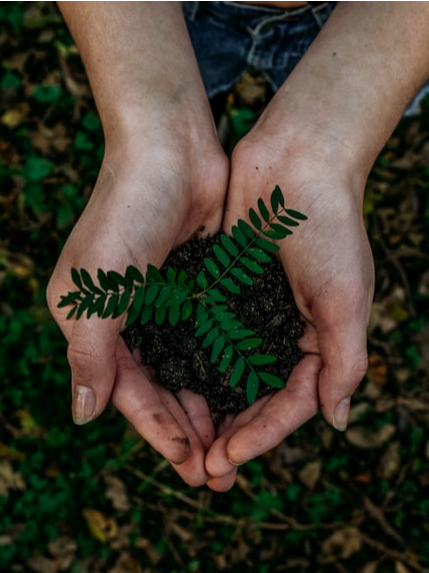
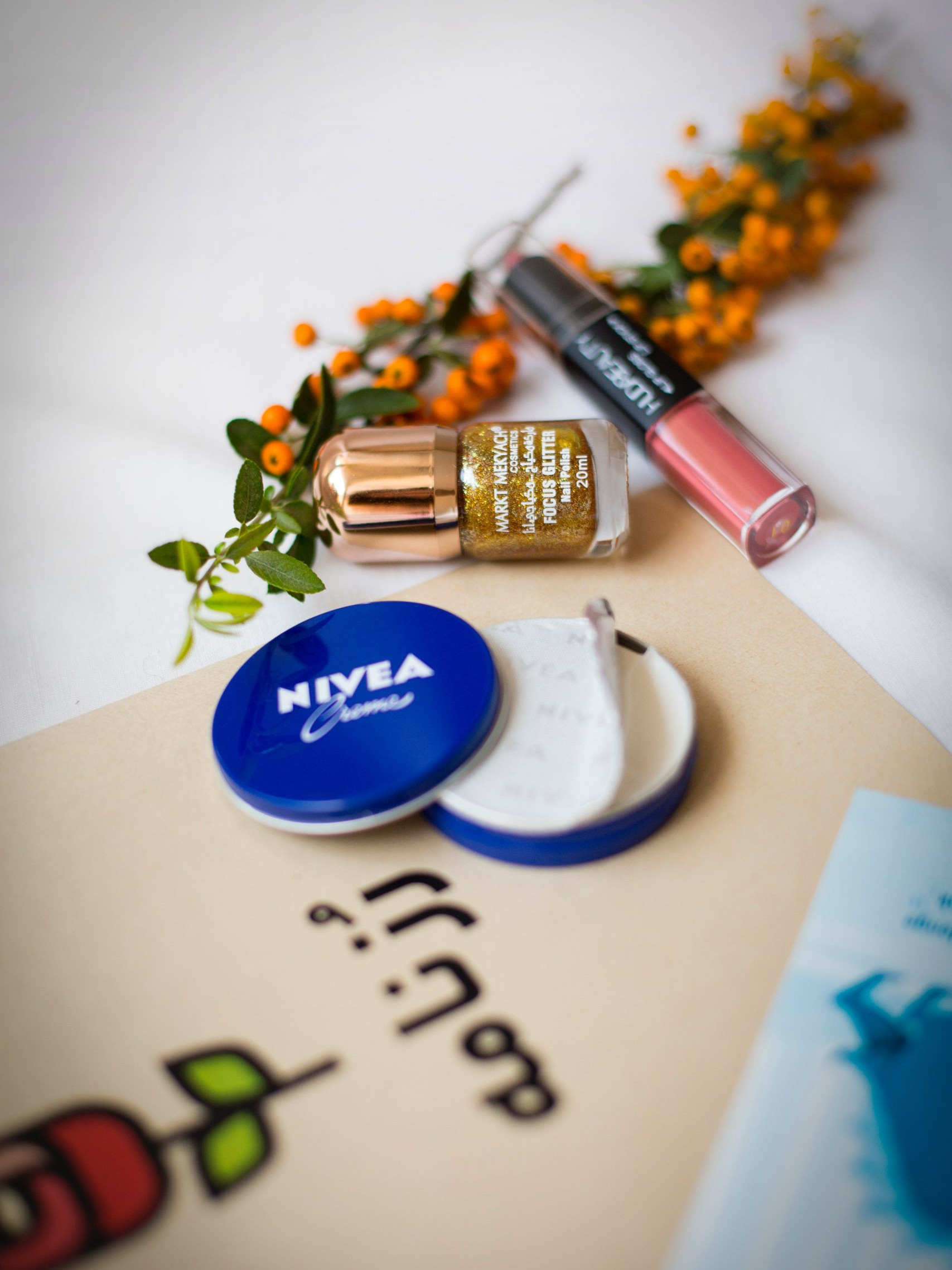
What is ECO-friendly packaging?
ECO-friendly packaging can also be called pollution-free packaging and sustainable packaging. It refers to packaging that is harmless to the ecological environment and human health, can be reused and recycled, and is in line with sustainable development. From a technical point of view, green packaging refers to a kind of environmentally friendly packaging developed from natural plants and related minerals that is harmless to the ecological environment and human health, is conducive to recycling, and is easy to degrade and sustainably develop. The life cycle of its packaging products from raw material selection, and product manufacturing to use and disposal should meet the requirements of ecological environmental protection. Eco-friendly packaging should be implemented from three aspects: sustainable materials, packaging design, and vigorous development of the green packaging industry.
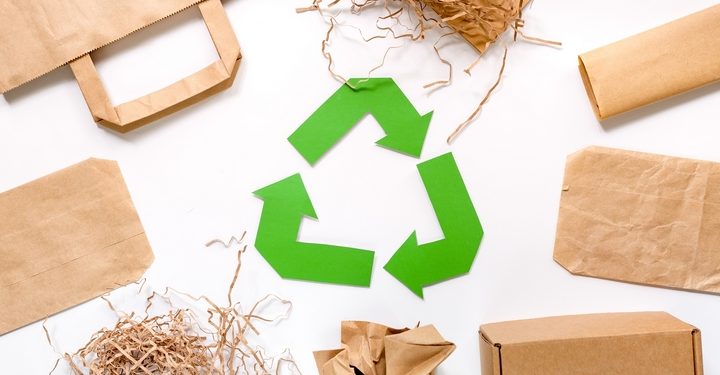
Its concept has two meanings: one is to protect the environment, and the other is to save resources.
The two are complementary and indivisible. Among them, protecting the environment is the core, and saving resources is closely related to protecting the environment because saving resources can reduce waste, which is actually the protection of the environment from the source of ECO-friendly packaging for cosmetics.
Whether you discard the biodegradable sugarcane packaging or reuse it for other purposes, you can rest assured that once you use the perfect products, they will not cause harm to the earth.
In essence: Eco-friendly packaging is to reduce energy waste during product design, and production, and minimizes energy consumption. It can be recycled and reused, or it can be degraded in a simple natural environment.
The essence of eco-friendly packaging is to minimize the price paid for its damage. This can be done by greening raw materials used in production, designing a more environmentally friendly product with an emphasis on sustainability features like recycling or using recycled paper products where possible etc..
Types of Eco-friendly packaging materials
Paper and cardboard is reusable, recyclable, and biodegradable in ECO-friendly packaging for cosmetics. There are a number of advantages to this type of packaging product, not least the fact that they are readily available. Many packaging manufacturing companies offer an environmentally friendly option that has been created using a high proportion of recycled paper.
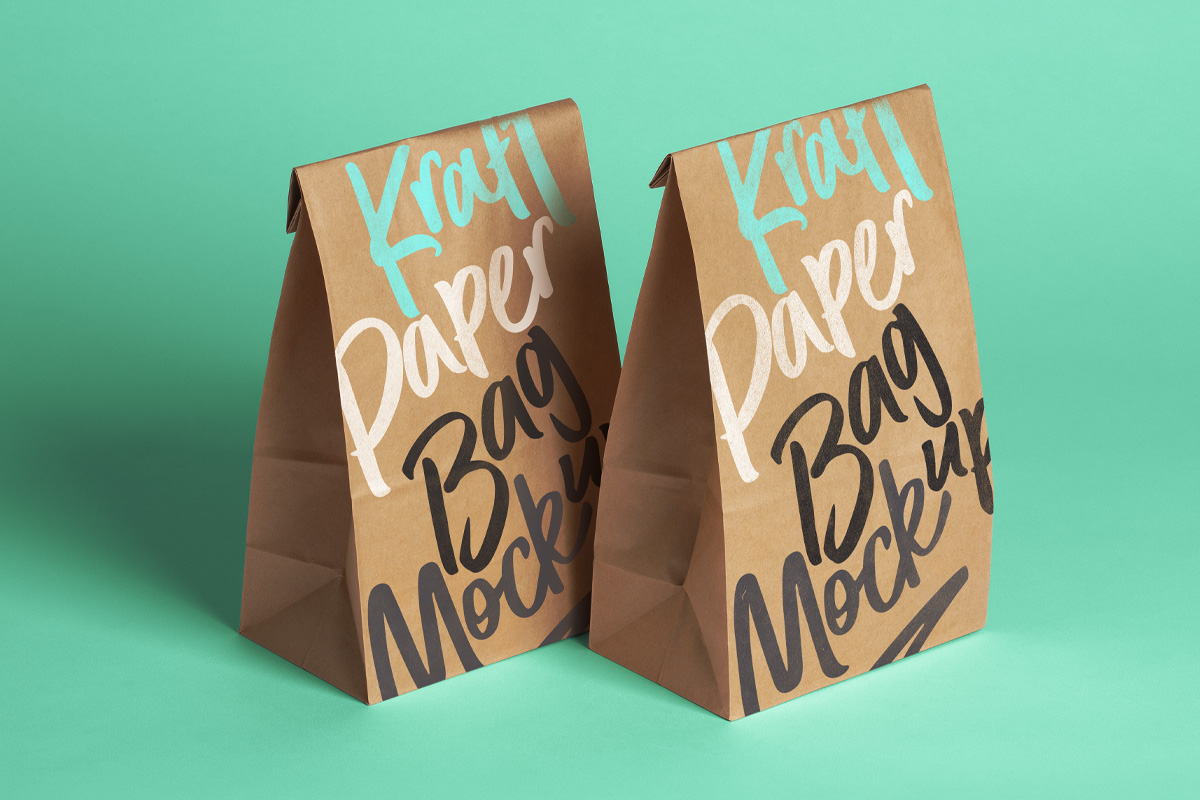
This is now commonly used in plastic bags and is also used in other items such as envelopes used for bulk mailing. This type of plastic starts to decompose when it is exposed to daylight and is a good alternative to traditional plastics.
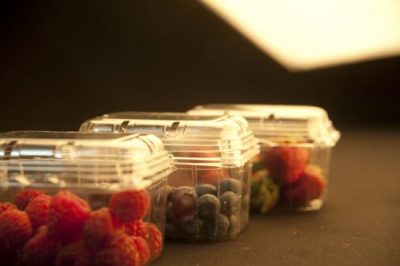
Ensuring all your items are properly insulated is important, regardless if you’re packing fine china or things that may be heartier. Using biodegradable packing peanuts is a great idea and can help the environment. These will make your packing easier and can allow you to remain eco-friendly
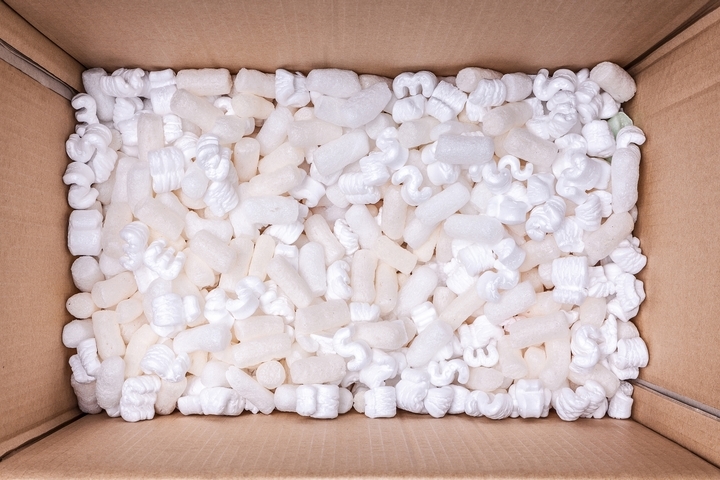
Adding inflatable air pillows to your packing supplies can be useful. These eco-friendly packaging materials are ideal to assist in ensuring all your belongings will have the right level of protection and cushion.
Fortunately, you can choose small bags that are filled up with air for this item. There’s likely to be much less damage to any of the goods you need to transport when you do. All these bags can be put to use by others at a later date. This is typically an inexpensive method for keeping your packaging materials good for the environment.
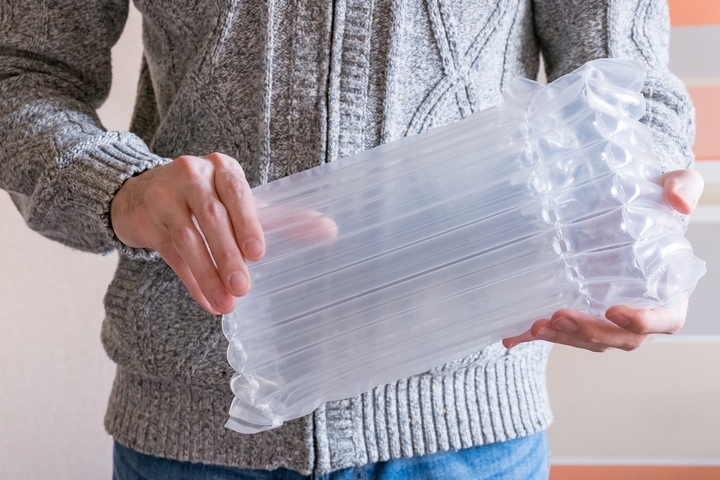
This is widely used as a packaging material. Environmentally friendly alternatives include bubble wrap made from recycled polythene and bubble wrap which is completely degradable.
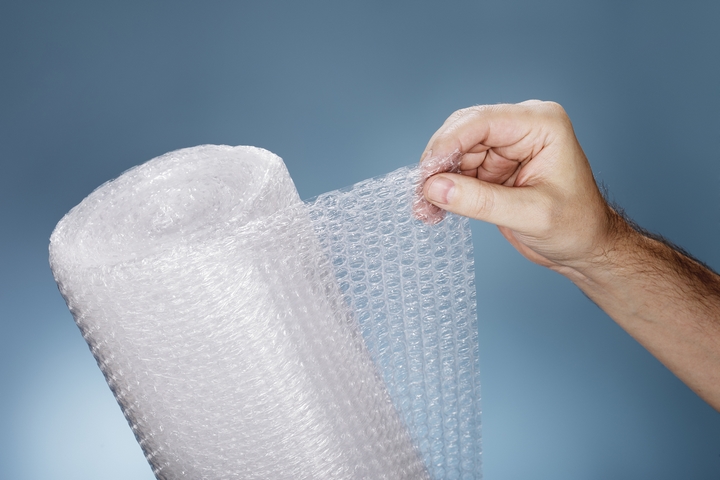
The PP woven pack, as it’s name suggests, is made from polypropylene resin (PP), which is a recyclable thermoplastic material. Using this element in out production allows the development of light yet steady composition that can handle heavy weights.
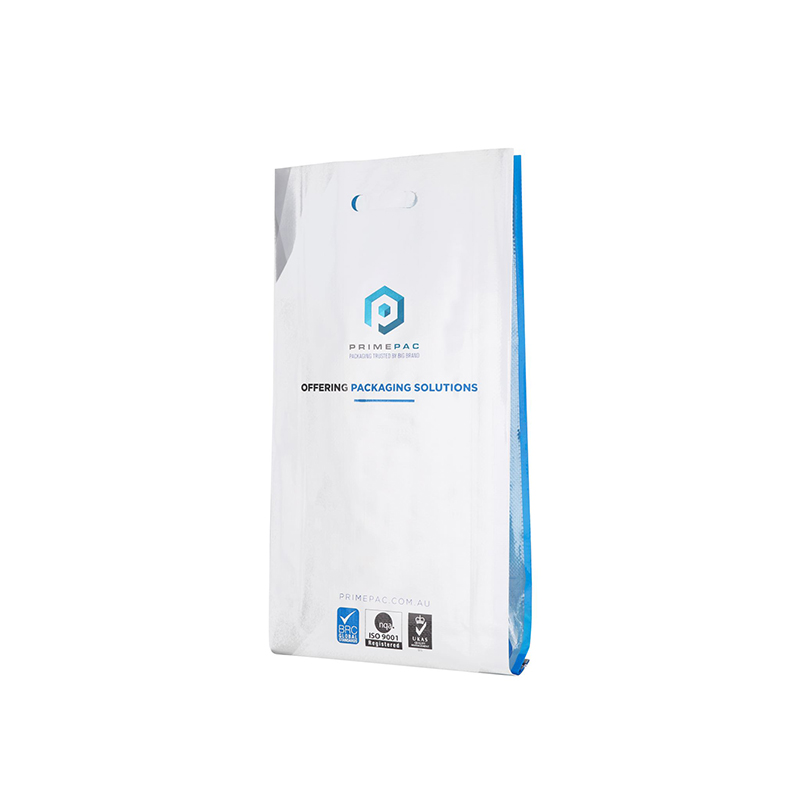
This packaging is made from mushrooms. It can be made from non-toxic materials and is an ideal method for working to have a better environment. You’re sure to enjoy the use of the mushrooms for a long time because this can make for durable packaging.
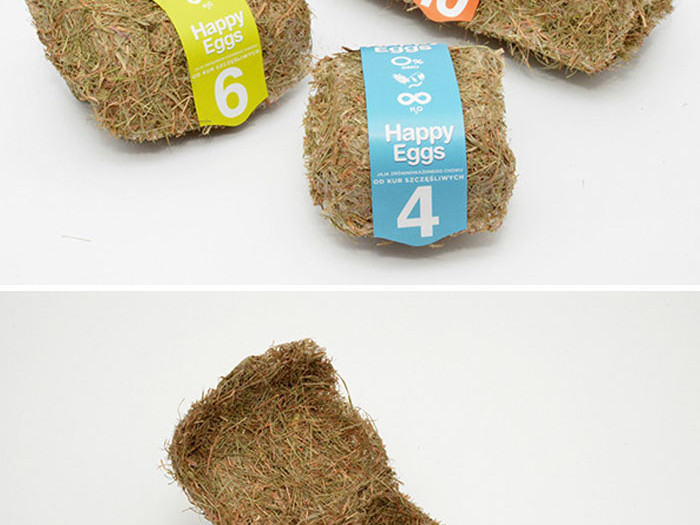
Why used eco-friendly packaging?
The Environment Secretary announced that England could ban the use of polluting plastics in an effort to protect our landscape and wildlife. George Eustice, on behalf of environmentally conscious people across Britain, said “We must do everything we can for nature.”
In an effort to eliminate all avoidable plastic waste, the government has announced that disposable plastic plates, cutlery, expanded and extruded polystyrene cups, and food and drink containers will be phased out. This is great news for the environment!
Secondary legislation was introduced into Parliament in March 2020 to ban the use of plastic straws, drink stirrers, and plastic stem swabs in England (subject to certain exceptions). As a result of COVID-19, ministers decided to delay the ban until October 2020 to avoid additional burdens on businesses.
The UK has announced that they will be implementing a new tax on all plastic packaging, including those items made out of recycled materials or other alternative plastics. The rate for these taxes ranges from 200 pounds per tonne up to 2 tons total weight in each package which amounts to about 40 dollars!
Consumer awareness about the damages that plastic packaging waste cause to the environment, coupled with bio-economy and circular economy policies, is pushing plastic packaging versus the use of bio-based and biodegradable materials. In this contest, even cosmetic packaging is looking for sustainable solutions, and research is focusing on modifying bio-based and biodegradable polymers to meet the challenging requirements for cosmetic preservation while maintaining sustainability and biodegradability.
Cosmetic sector researchers and industries are teaming up to drive the industry toward being more ecological. By using biodegradable polymers, such as poly(lactic acid), polyhydroxyalkanoates, and polysaccharides, they are helping to save our environment. These materials are already present on the market in some form or another, with many more solutions understudy and optimization. Fruitful cooperation between these groups will help make this a reality for everyone involved in the cosmetic industry.
Eco-friendly packaging for cosmetics - How to do?
Here are some tips on how to achieve Eco-friendly packaging for cosmetics:
The material is green
Packaging designers should try to use green packaging materials and design long-life packaging materials, which can greatly reduce environmental pollution after the packaging is discarded.
Packaging reduction.
In some developed countries, many supermarkets encourage consumers to use nylon shopping bags that can be used multiple times, but less disposable plastic bags. The materials used in packaging design are minimized, unnecessary packaging is eliminated as much as possible, and simple packaging is advocated To save resources.
Natural packaging materials
The materials used are as simple as possible, do not mix different materials in order to facilitate recycling.
Packaging design is detachable
Packaging that requires a composite material structure should be designed as a detachable structure, which is conducive to recycling after disassembly.
Pay attention to the reuse of packaging materials
The use of recyclable, reusable and recyclable packaging improves the life cycle of the packaging, thereby reducing packaging waste.
The harmlessness of packaging materials
The European Packaging and Packaging Waste Directive stipulates heavy metal content levels (lead, mercury, chromium, etc.), for example, lead content is less than 100PPM. my country should also prohibit or reduce the use of certain packaging materials containing harmful components such as lead, mercury, tin, etc. in the form of legislation, and specify the allowable content of heavy metals.

New trends of ECO-friendly packaging for cosmetics in 2022
Environmental issues affect people's lifestyles all the time, many packaging companies also actively respond to environmental protection. Make-up products-as indispensable products in daily life, ECO-friendly packaging for cosmetics, the industry has also begun to use sustainable raw materials in packaging design and application as well as various cosmetic packaging and product accessories.
This not only improves the product's design sense but also enhances the brand image of the product.
At the 2022 MakeUp in Paris, many exhibitors are showing their innovative products with novel green and environmental concepts in ECO-friendly packaging for cosmetics.
Let’s see what’s the new trends are!
Degradable plastic – Ecoform
At this exhibition, the most striking is a material called – Eco form, a recently launched material that is 100% biodegradable and is described as an ideal replacement for thermoformed plastic platforms or foam inserts (also synthetic) goods in ECO-friendly packaging for cosmetics.
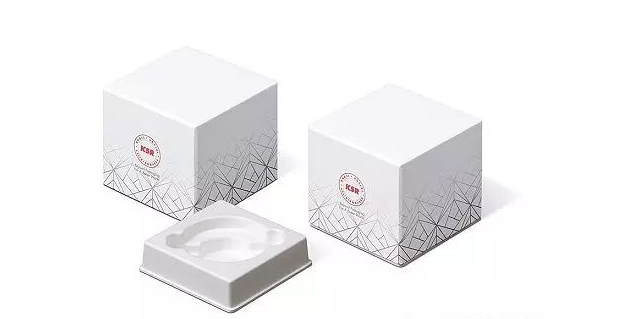
The development of this new and eco-friendly plastic has been a great way to replace traditional plastics used in the cosmetic industry. This plant-based material is made mostly out of green plants, such as bamboo or sugar cane; it also contains wood fibers which can all be recycled when they’re done being used for the packaging of our cosmetics.
Advanced eco-friendly brush
An innovative environmentally friendly brush called One Cut Brush has attracted much attention at the exhibition. In order to better match the new environmental trends, the exhibitors proposed 100% vegan products-synthetic hair, and 100% wooden handles to customers, which is unique in the makeup brush market.
The customizable brushes are made of FSC certified light birch wood, and save the usual aluminum ferrule, creating a stylish, organic look.
The hair material used is Ecolon (a 100% animal-free, innovative synthetic fiber) that creates a soft, natural feel. It can resist water as well as solvents after treatment – both important qualities in a good beauty tool!

Reusable multi-purpose toolbox
As part of its “reuse” series, Texen Beauty Partners, a multi-purpose toolbox exhibited at Makeup in Paris, showcased the integrated beauty tool concept. One of the most representative is an 8ml press pen used for perfumes, make-up products or skincare products. Its inner box and lid are made of easy-to-recycle PP or even rPP.
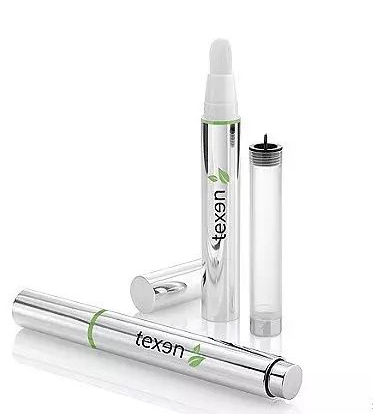
Advantage of using Eco-friendly packaging
# Reduces your carbon footprint
The carbon footprint is an estimate of how much greenhouse gas emissions are caused by human activities.
The product lifecycle of packaging products undergoes various phases, from the extraction of raw materials to production, transportation, usage, and end of the life cycle. Each phase releases a certain amount of carbon into the environment in ECO-friendly packaging for cosmetics.
Eco-friendly packagings employ different methods in each of these processes and hence reduces the overall carbon emissions, reducing our carbon footprint. Also, eco-friendly packagings release fewer carbon emissions during production and they are produced using highly recyclable materials which reduce our consumption of heavy-energy resources.
# Biodegradable
Green packaging not only reduces your carbon footprint and environmental impact but is also beneficial after it has served its purpose as the ECO-friendly packaging for cosmetics materials are biodegradable.
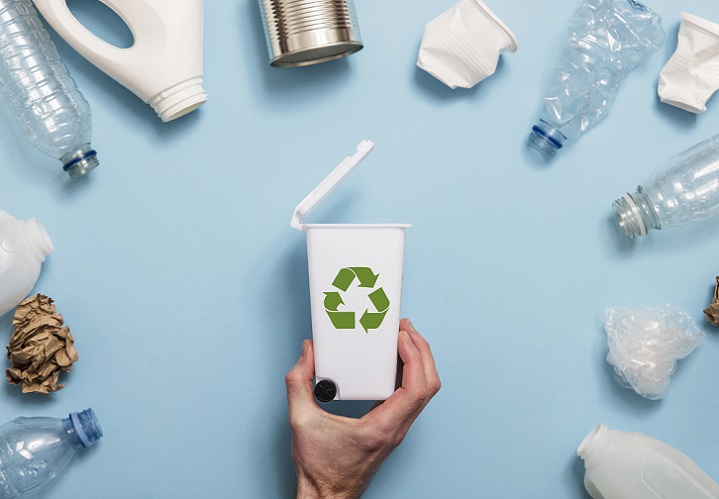
# Ease to Disposal
Imagine if your favorite cosmetics came in eco-friendly packaging! The idea of having such wastefulness is enough reason not to buy them, but it gets worse. Not only do these items create more trash when consumers throw away their boxes and bottles after use – which can lead back into landfills where they’ll break down slowly over time-, but most recycled materials used for making up packing peanuts also end up being burned or buried under other fuels like coal tomorrow morning because there isn’t space available anymore at recycling centers near where people live.
#Lower Shipping Costs
In addition to using recycled and biodegradable materials, ECO-friendly packaging for cosmetics supplies is designed with minimalism in mind. While they still provide effective protection for the items containeLess packaging means more profits! Eco-friendly boxes for cosmetics allow you to pack your products with the bare minimum of materials while still providing high-level protection.,which then leads us to our next point: being able to fit even MORE items onto each pallet or container means bigger profit margins for companies who use these ECO-friendly solutions versus traditional ones This can result in requiring fewer pallets or containers to ship the same number of products, which also leads to decreased shipping costs in ECO-friendly packaging for cosmetics.
# Become a part of the brand message.
These days people are getting more environmentally conscious in buying ECO-friendly packaging for cosmetics, they are constantly seeking out ways to make a positive impact on the environment without making any major changes in their existing lifestyle. By using eco-friendly packaging you are giving your consumer a chance to make a positive impact on the environment.
#No harmful plastic
Traditional packaging methods and materials contribute to global warming and other environmental issues. Using eco-friendly packaging allows you to reduce the amount of plastic that you use. Using non–sustainable petrochemical resources which are a part of all traditional plastics requires a lot of energy. Petrochemical products usually tend to litter public places and have been linked with health problems when used with food.
Conclusion:
Eco-friendly packaging for cosmetics, you must first understand what is Eco-friendly packaging, and what are the widely used materials in those sustainable packaging. The use of sustainable raw materials combined with a fashionable design is the new trend of Eco-friendly packaging for cosmetics. Follow us to learn more about packaging trends and developments! If you also find this article interesting, please share it with more people in need!
About PrimePac
At PrimePac, we bring together design experts and brand innovators to create fresh ideas, customized packages, and fully efficient processes.
We design creative packaging solutions that cater to a diverse global audience with the in-house knowledge and network of experienced professionals to meet the demands of every type of client.
From our dedicated sales team and warehouse staff in the UK to the experts at our production facilities in China, all of our employees are guided by four core values at the heart of our business in ECO-friendly packaging for cosmetics: integrity, innovation, passion, and engagement.
Network
With our team in China and UK working as one, we reduce inefficiency so that you deal with one streamlined team from manufacturing right to delivery.
The service support team located in Guangzhou, the manufacturing hub of China, provides rapid response, and local industry knowledge in ECO-friendly packaging for cosmetics. Warehouse and 3PL network located in Sydney, to provide rapid distribution, and delivery to your customers.
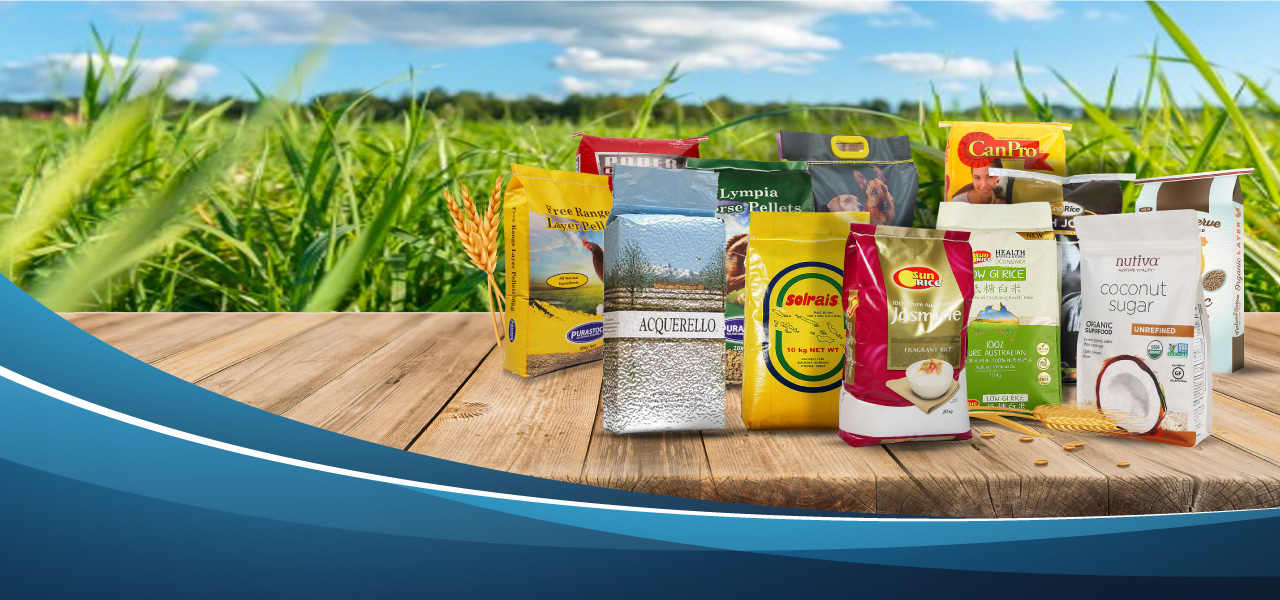
Why Choose Flat Bottom Bags - A kind of popular packaging
Flat bottom bags have been around for a long time and are still one of the more popular ways to package food products. They come in many different shapes, sizes, and colors – you name it! The best thing about this type of packaging? You can print on them whatever image or design that shows off your brand without worrying too much about saving space with text.
In this article, we first introduce what are the characteristics of flat bottom bags, then introduce the advantages of flat bottom bags and why we love custom flat bottom bags and finally explain the market prospects of flat bottom bags.
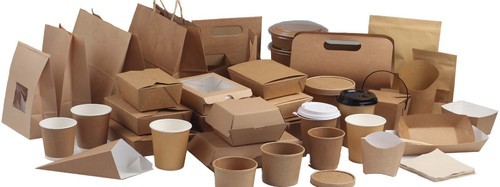
Ever What is Flat bottom bags?
Just as its name implies is eight at the bottom of the sealing side, four sealing sides of the side of each side two sides, this bag is nearly two years the rise of a new bag. Flat bottom bag because of its good stereo feeling, show class looks, high-end atmosphere, popular with consumers.
Flat bottom bags have a flat bottom that makes them stand upright on shelves or wherever one places them. This is one of the most resourceful qualities flat-bottom stand-up bags possess.
These bags have a gusset on the right and left side as well at bottom to support its design. The expandable features of these versatile industries make it stand upright for better fitting into packaging requirements, making them look attractive too!
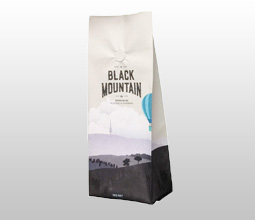
These durable containers come in three layers, which can securely hold the product inside and be recycled or decomposed. It’s design gives it an attractive shape to customers who want their products well protected but also love how much space these unique forms give them for storing more items.
What are the characteristics of flat bottom bags?
Vivid color printing, independent, with a resealable zipper and ventilation holes. With a flat bottom and side gusset, the Flat bottom bags can stand up well on the shell, so as to attract the clients’ eyes more easily.
With a flat bottom and side gusset, the inside space of the bag is enlarged a lot, which achieves a much larger volume for holding goods. Customized material, thickness, size, shape, and design are welcome.
Strong sealing, easy-open fresh fruit bag. There are 2 sets of cylinders required for the Flat bottom bag, one set for the front and bottom. And Back Panel, the other set for the right and left side gusset. The two parts will be printed separately and then combined together by heat sealing.
Food grade packaging supplies, eco-friendly ink, non-toluene workshop condition. Realistic & lively print effect help upgrade the image and competition.
What is the use of flat bottom bags?
Flat bottom bags can be used in the packaging of many industries such as food packaging, animal food packaging, organic product packaging, and many other uses.
You can add an extra fitment in a flat bottom bag:
Zipper (Make it easier to open the bag and maintain it)
Suspension holes (to hang the bags instead of placing them on the shelves)
Degassing Valve (to keep the product from exposure to air and the expulsion of industrial gases)
Laser scored tear notch for easy tear and opening.
Flat bottom bags are the innovative alternative to a folding carton or corrugated box. Unlike a bulky box with an ineffective inner liner, flexible box bags have a small footprint and keep products fresh longer. No more squeezing big boxes into the cupboard and rolling up liner bags once the product has been opened – flexible box bags make it convenient for you and your customer to store, transport, access, and consume your quality product.
Our customers use Flat bottom bags to package anything that would traditionally go in a box with an inner bag, such as cereal, granola, crackers, and snacks. The flat bottom mimics a box, allowing the pouch to stand effectively, while side gussets provide more space for labels and branding than traditional stand-up bags.
In addition, flexible box bags are made with a heavy-duty barrier film that protects the bags’ contents from moisture, odor, puncture, and other hazards and contaminants. That means your product stays fresher, longer, even once the packaging has been opened (unlike those worthless liners!)
We know that your customers love their own products and want them quickly. That’s why our Flat bottom bags use up to 15% less film than typical stand-up bag but hold more volume. Each bag has five printable surfaces perfect for brand building, can be printed in up to 12 colors, and is available in clear, metalized, and foil structures. Functional zipper tops complete our flexible box bags, guaranteeing that your customers can easily reach their fresh, favorite products again and again.
What is the advantage of flat bottom bags?
1、The three-flat bag style is becoming more popular because it offers the advantages of thin-film materials and visible shelves. The volume can be higher than traditional vertical bags, which makes this type great for products that need room to breathe like fresh produce or packaged foods The tensioning chain can be used repeatedly, which is convenient to use, to avoid the failure of the tensioning chain on the organ bag, and a one-way valve can still be added.

2、Flat bottom style bags are the newest kid on the block. This pouch style is getting more famous for high-end food product packaging companies. Flat bottom bags are most expensive than any other type of flexible packaging bag. But due to good looking and convenience, the bags are getting famous.
3、Flat bottom bags have many names like box pouch, box bottom bags, block bottom pouch, square bottom bags, box pouch with valve, quad sealed flat bottom, block bottomed bags, three side gusset bags, brick pouch, etc.
4、Flat bottom pouch looks like a box or brick style. These bags have gussets on the left and right side and gusset on the bottom. We can fix zipper in bags as optional. We can also give pocket zip zippers fitted in flat bottom bags.
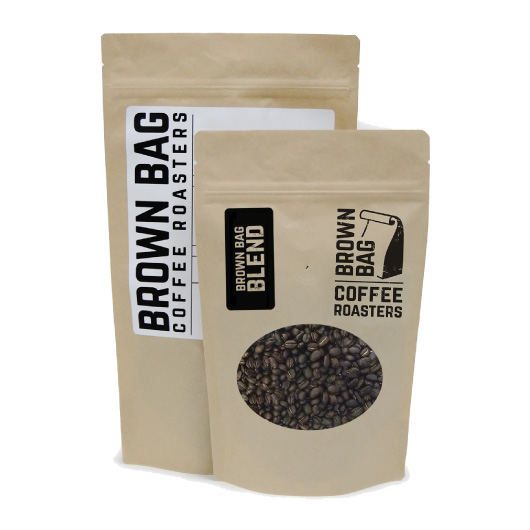
5、Flat bottom bags can save 15% of packaging material due to the unique design. So these bags are called environment-friendly packaging bags. We can also save shelf space in the supermarket as the bags stands tall and the width of the bags is less compared with stand up bags. So this style bags can save money for the food manufacturer by paying less to supermarket shelf space.
6、We can fix Degassing valves for coffee packaging. The bags are used to pack Pet food, organic products, chocolates, powders, spices, muesli, biscuits, tea etc. We can personalize flat bottom bags by printing in advanced rotogravure machines up to 9 colors. Customized printing is possible in brown kraft paper, white poster paper, PET, foil, BOPP.
Can be customized to suit your flat bottom bags
Customization: We have two options for all our clients.
1) In Stock/Ready Bags
2) On Custom Printed Bags
If you wish to customize i.e. make changes in color, size, print, or features of the stand-up bags you need or you have selected, we can do it for you fluidly.
On the other hand, we have banked an amazing collection of stand-up bags ready to be shipped!
Rotogravure Printing: Attraction is directly related to something beautiful, something attractive. To attract your customers, we use Rotogravure and Flexographic printing.
Rotogravure printing has changed the way stand-up bags look. It is attractive, quick, and budget-friendly too!
Auxiliary Tools/Accessories: We did not wish to make our clients wander in search of auxiliary accessories required to fill the stuff in bags/bags.
So, we decided to transform ourselves into a One Stop Shop Solution for All Your Packaging Needs, by providing accessories such as heat sealers, filling machines, and more under one roof, here at Smart Bags.
Our flat bottom bags give your product maximum shelf stability, and superb protection, all wrapped in an elegant and distinctive look. The gusseted sides and quad seals offer a stronger structure and more filling volume than other bags, making them a great choice for coffee, candy, pet food and treats, and other dry ingredient food products.
We can custom-print over all five panels, providing enhanced artwork and design possibilities. Flat-bottom bags, also called Flat bottom bags, are a good “green” choice, too, requiring less energy to produce and less material than in traditional stand-up bags.
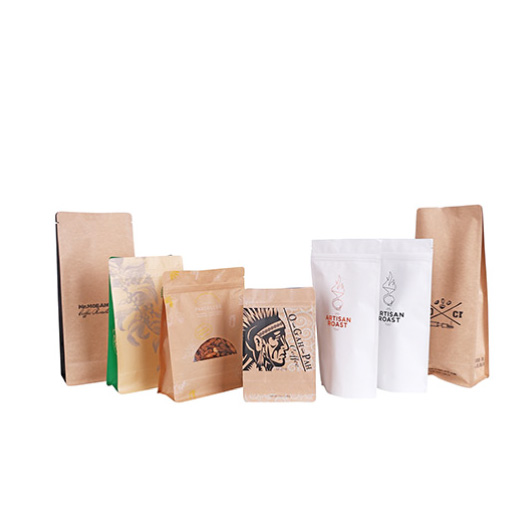
Flat Bottom Bags – Market Outlook
The flat bottom bags have high demand in the market owing to the fact that the bag offers shelf stability due to its sturdy level bottom. The base is flat and secure and is ideal for packaging solutions for many consumer products such as rice, tea, coffee, cereal, and many more. Thus, the outlook for the growth of the global flat bottom bags market is expected to remain mostly positive during the forecast period.
In addition, flat bottom bags are produced with the help of higher quality films to enhance the durability and flexibility of the pouches. Flat bottom bags can also be customized to suit individual product and brand so that it has high resistance to the pressure that decreases the chances of package rupture. One of the driving factors of the flat bottom bag market is that these bags can be produced with lamination and metalized lining that helps in keeping excess moisture out, which keeps products fresher for a longer time.
Conclusion:
The Flat bottom bags are a perfect solution for those looking to make their packaging stand out. These side gusseted pouches can be unrolled and rolled up like an accordion, which provides the benefits of both traditional bagged products as well as ones that have standing posts on them; plus it takes up less shelf space!
Flat bottom bags have unique advantages and can be customized according to demand, and have a strong market prospect.
About PrimePac
At PrimePac, we bring together design experts and brand innovators to create fresh ideas, customized packages, and fully efficient processes.
We design creative packaging solutions that cater to a diverse global audience with the in-house knowledge and network of experienced professionals to meet the demands of every type of client.
From our dedicated sales team and warehouse staff in Australia to the experts at our production facilities in China, all of our employees are guided by four core values at the heart of our business: integrity, innovation, passion, and engagement.
Network
With our team in China and Australia working as one, we reduce inefficiency so that you deal with one streamlined team from manufacturing right to delivery.
Service support team located in Guangzhou, the manufacturing hub of China, providing rapid response, and local industry knowledge. Warehouse and 3PL network located in Sydney, to provide rapid distribution, and delivery to your customers.

About fruit and vegetable packaging you may wonder
How can you keep your vegetables fresh?
Fruit and vegetable packaging is a farm practice that involves taking fresh crops from the field to the customer. Since all fruits or veggies are perishable, choosing the right package for them becomes crucial in order to survive the market with the high quality intact- it’s not just about storing goods anymore! The main function these days seems simple enough: maintaining produce by protecting its nutrients while extending storage life span as much as possible before they spoil on us.
More importantly, fruit and vegetable packaging represents an integral component in marketing management. As a matter of fact, a package is a way of communication with the customers, and therefore, it’s directly related to the sales strategy in fruit and vegetable packaging.
In this article, we will introduce the different types of fruit and vegetable packaging as well as explain how you can choose which type is right for your needs. We also analyze what kind trends are emerging in these industries so that users know where they stand when looking at their options.

Types of Fruit and Vegetable Packaging
Regarding its function, fruit and vegetable package can be observed in two ways:
Primary package:
The layer of the package which is in direct contact with the product; usually offered to the customer
Secondary package:
Holds the primary package during transport and storage, and therefore facilitates its handling
Regardless of its function, there are various types of fruit and vegetable packages. These include:
# Containers:
a cost-effective method for packing crops that are not so susceptible to physical damage, such as melons, pumpkins, yams, potatoes, and cassava. After the harvest, crops are stacked into a container which is fitted to a transport vehicle and delivered to the customers without using any other package.
# Woven baskets:
These baskets are commonly used by small-holder farmers and made from locally available materials. They provide very good ventilation for crops, but their roughness can damage them during transport or handling.
# Bags:
A relatively cheap packaging type, suitable for crops that are not so susceptible to physical damage, such as potatoes, onions, pumpkins, or melons.
Modified atmosphere package:a special package created by removing the air from the package and replacing it with a single gas or a mixture of gases. The carefully managed mixture of gases within these packages maintains an optimal level that will enrich your harvest while extending its storage life.
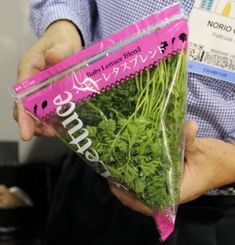
# Vacuum package:
A special type of package in which the oxygen has been removed and replaced with a vacuum. The result is an airtight environment, perfect for storing your products.
A Few Lessons About Choosing the Right Package
Farming is a very special activity that is highly dependent upon natural processes. In regards to that, every farm management should be unique. Each farmer’s decision, as well as each farm practice, can result in unexpected results. The same is with crop packing management. In order to manage crop packing successfully, while deciding on the right crop package, farmers should keep in mind a few of the following tips:
-
Crop requirements:
each crop has its own package requirements, for instance, berries are much more susceptible to damage than apples, and therefore, they require carefully managed packing.
-
Crop transport and storage management:
there is a difference between packing the crops that will be directly delivered to the market, and crops that will be stored for a certain period.
-
The storage:
crop package should be in accordance with the type of storage (CA storage, cooling storage, simple storage facilities, pre-cooling), as well as with the duration of the storage (short-term or long-term storage).
-
Message to customers:
When picking fruits and vegetables, farmers should consider how they want their products presented to customers.
-
Value for money:
when deciding on crop packages, a farmer should be aware of his own financial possibilities. Besides that, for certain high-value crops (e.g. blueberries), farmers can afford higher costs of packaging. On the other hand, for crops such as potatoes, farmers prefer using more affordable packaging solutions.
In order to make sure that we are able properly convey advertising messages and important product information, it is necessary for us collaborate with an experienced agency, which in turn closely cooperates with the packaging manufacturer who ultimately manages the printing of the fruit and vegetable packaging.
He also competently advises which printing method best suits the planned product and its specific requirements: flexographic, offset, or digital printing. In all of the printing methods mentioned above, it is possible to use food-compatible inks for a safe and pollution-free product.
Six trends in fruit and vegetable packaging
Modern consumers are more concerned than ever about the food they eat and where it comes from. The growing demands in terms of health, sustainability, and organic production determine not only what customers purchase but also how modern people behave with regards to grocery shopping today.
At the same time, the variety of food products is increasing enormously – there are also constantly changing breeds and new varieties in the fruit and vegetable sector. Along with these changes, the packaging requirements are changing as well.
Trend 1: Sustainability along the supply chain
Eco is in! The desire for sustainable food ranges from production, up the value chain, into the kitchen. Packaging plays an important role throughout the supply chain – in terms of freshness and protection of goods, quality, and labeling. Corrugated cardboard or full cardboard packaging is not only nearly 100 percent recyclable, but it is also made from renewable raw materials, which has a positive impact on the CO2 balance.
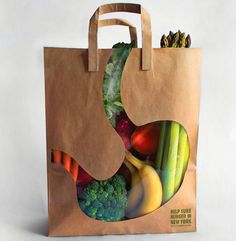
In addition, such packaging is much more natural than plastic and is rightly perceived by consumers as sustainable and environmentally friendly. For this reason, supermarkets and discounters are increasingly using cardboard instead of plastic in the packaging of fruit and vegetables, as in the case of cherry tomatoes, for example, which are increasingly available today packed in printed corrugated board trays.
Trend 2: Promoting the regional character
Many growers already know that in the case of fruit and vegetables, the regional origin of the products is even more important to consumers than biological or ecological considerations or fair guarantees. This was again confirmed by the study “Fruits and Vegetables 2016” by market research institute Mafowerk.
As a result, more and more German producers are growing their fruits and vegetables in greenhouses. For consumers, this means for example that in November there are still strawberries from Franconia – instead of Peru. On the one hand, for the growers, this means a longer season and thus a competitive advantage over fruit and vegetable suppliers from abroad. On the other hand, smaller farms also have to learn to play their regional trump card: their own name, logo, and, of course, the region should be printed directly on the packaging. Packaging of cardboard or corrugated board is particularly suitable here because of the good printability of the material. And this is how regional producers stand out from their competitors in Italy, Spain, and so on.
Trend 3: Optimum advertising effect through a variety of printing processes
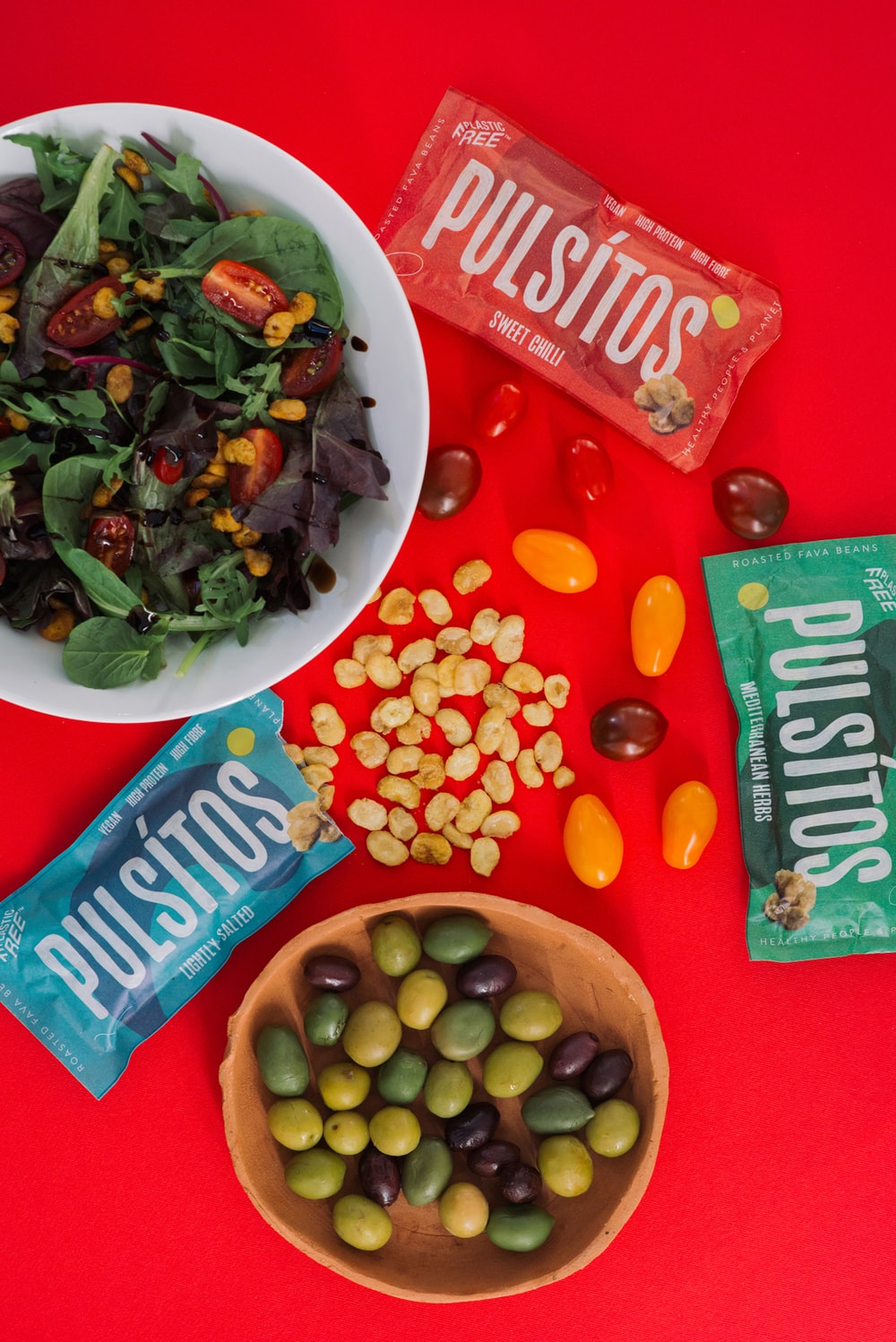
Trend 4: Flexibility and proximity in terms of logistics
High-yield harvests, lean harvests, a short-term harvest time, or the sudden increase in demand for regional produce due to trade promotions – in the fruit and vegetable sector, flexibility is extremely important. As a result, growers should source their packaging from a regional supplier who offers flexible delivery times, and variable purchase quantities, and who offers to store the packaging until harvest time.
Trend 5: New packaging sizes and shapes
Changes in the shape and size of fruits and vegetables also require adaptation of the packaging. With the trend towards smaller fruits and vegetables, packagers must be aware of how their packaging fits into this new landscape. For example there is a growing number in which consumers purchase snack cucumbers rather than larger varieties; these items require specific types or sizes for optimum saleability depending on what they will eventually end up being used as snacks with—whether it’s sitting next to your favorite iced tea at home during summertime cookouts or thrown onto salads mixed amongst other things.
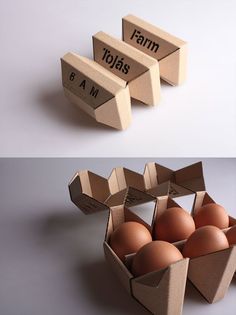
Trend 6: Changed material requirements
Foods that come in plastic packages may be rated lower than those available in an open cardboard box because it can lead to more spoilage. However, paperboard fruit and vegetable packaging aren’t any better since the moisture within these products causes them to go bad faster on your grocery shelf if not properly protected during transport or storage – this is why cucumbers are packed inside cellophane before entering into a refrigerator where they’ll stay fresh longer!
Alternatively, growers may provide fruit and vegetable trays with special paper grades or coatings that prevent moisture from entering the carton. An important role in material selection also plays a role in how fruit and vegetables are stored across the supply chain, for example in cold stores, during the transport route, and for which period of time.
Conclusion:
Some farmers do not add importance to crop packaging. However, choosing the right package for crops can be a turning point for preserving the yield and maintaining crop quality. Above all, crop packaging will determine a farmer’s success on the market.
The current trend of fruit and vegetable packaging has reached personal benefit. We recommend that farmers use an excellent vegetable and fruit packaging company, and they will advise agricultural producers on the packaging of fruit and vegetable varieties.
About PrimePac
At PrimePac, we bring together design experts and brand innovators to create fresh ideas, customized packages, and fully efficient processes.
We design creative packaging solutions that cater to a diverse global audience with the in-house knowledge and network of experienced professionals to meet the demands of every type of client.
From our dedicated sales team and warehouse staff in the UK to the experts at our production facilities in China, all of our employees are guided by four core values at the heart of our business: integrity, innovation, passion, and engagement.
Network
With our team in China and UK working as one, we reduce inefficiency so that you deal with one streamlined team from manufacturing right to delivery in fruit and vegetable packaging.
Service support team located in Guangzhou, the manufacturing hub of China, providing rapid response, and local industry knowledge. Warehouse and 3PL network located in Sydney, to provide rapid distribution, and delivery to your customers.

Windowed packaging in our daily life
Traditional packaging often hides the product inside the package, but modern designers are trying to overthrow this model and display the product in the packaging. Create a window in the packaging to display the product, so that consumers stay and notice, this is windowed packaging, who walk past your store window display unit on top with all its pretty goodies peeking out at you! This new trend is known Half- Moon Packaging which features see-through panels that give shoppers just enough information about what lies within without taking up too much space product packaging should increase simplicity, authenticity, and meaning. Packaging must be important as the first step in reaching consumers.
Want to stand out from similar products, not only have good quality but also have outstanding packaging! This article mainly explains why windowed packaging is important to food and the benefits of windowed packaging in the Health and Beauty industry.
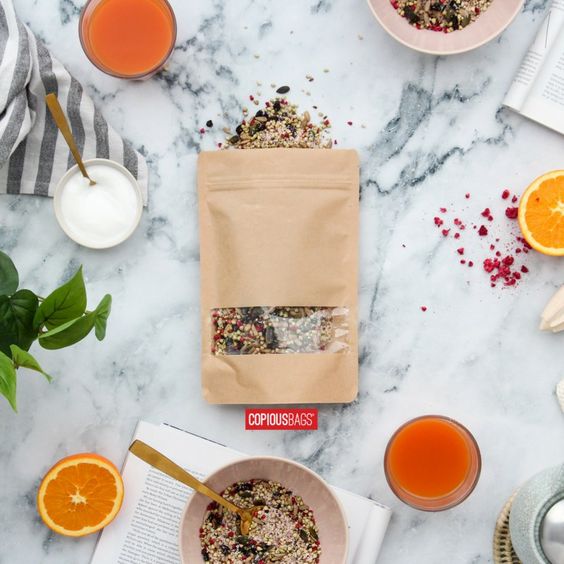
Why windowed packaging is important to food
All kinds of commodities have their own characteristics, and food packaging also has its distinctive characteristics. In addition to paying attention to its practicability, convenience, and safety, food packaging begins to pay more attention to its high quality, high taste, and high-end sense.
Window packaging has become famous all over the world. It’s considered to be one of, if not THE best solution for entrepreneurs in many industries. Although window packaging has become popular in various fields such as clothing, cosmetics, etc., it has become the preferred choice of entrepreneurs, especially in the food industry. Window glass is widely used in food boxes. The main reason is that window boxes increase the visual appeal of the product and make it highly attractive to the customers. When customers can clearly understand the attractive contents inside, it stimulates their buying behavior. Window boxes are used to package a range of food products. Whether they are cereals, fruits, meat, chocolate, tea, or other edible foods, these custom food boxes are perfect for highlighting your food brand. Window packaging has its own elegance that complements your products.
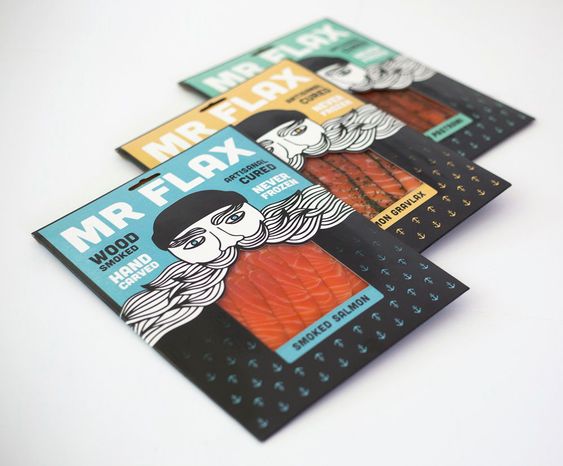
They can be decorated and customized according to the requirement. Below are some of the main reasons why windowed packaging is important to food:
High-Quality Material protects the Food Items:
The use of high-quality materials is necessary to ensure the maximum safety and quality of your food items. It should not be free from chemicals that could spoil them easily, as well as make sure that these foods last for long periods outside their packaging due in part to how delicate they are specified with this type of product. Usually, the window food boxes are designed from a paperboard of Kraft paper. These are the refined forms of cardboard. They are durable enough to deliver the items safely from source to destination. Moreover, it also preserves the freshness of food items and retains their taste. Let us take the example of bakery products. They are the most delicate food items which require special care for their handling.
Confectionaries use high-quality cake boxes, cookie boxes, and other packaging boxes to protect their items from spoilage or mishandling. A little ignorance can destroy your lovely creations by smashing the frosting and beautiful decorations. No matter how perfect your taste is, if the customers receive their products in a sullied condition, they will never return to you again. In addition, the external safety of food also needs consideration–you could design hanging window boxes for easier transportation instead.
Mesmerizing Display:
Windowed packaging is a great way to make your food seem more appetizing. If customers can see what they're getting, it increases their satisfaction level and window boxes are best for all types of items in which presentation matters.
Customers never give a second look at the packaging which appears unappealing. Various physical aspects like packaging design, color schemes, typography, and shape are responsible for providing a perfect display for your products. Introducing window panes adds to the value of your packaging. It gives an inspiring and professional look to the items making them stand out on retail shelves.
If you want your product to stand out from the competition, then using high-visibility packaging is key. There’s more than one type of this kind including flip-top bottles and blister packs.
The high-visibility packaging not only promotes the product but also makes it easy for consumers to see. The outside of this box has clear graphics that are confidently displayed, so there’s no confusion or misconception about what you’re getting inside.
Cost Effective Packaging Solution:
Keeping the costs low is one of the biggest targets of every business. Especially in the case of smaller-scale businesses or startups, the entrepreneurs are in the search of ways to keep their investment costs low. Window boxes are one of the most effective packaging solutions. Irrespective of their specialized features, using them as custom food boxes can help you in meeting packaging requirements without disturbing your budget.
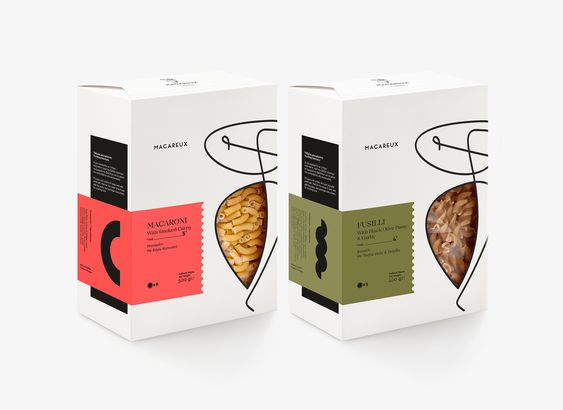
The boxes are made from cardboard which is one of the most cost-effective materials. It is readily available as it is made from natural substances. Its ability to recycle adds to its advantage. Window boxes DIY are easy to make by using a sheet of cardboard and transparent plastic film. You can make them for your food packaging at a smaller scale or for individual use.
Increase Sales by Endorsing your Food Brand:
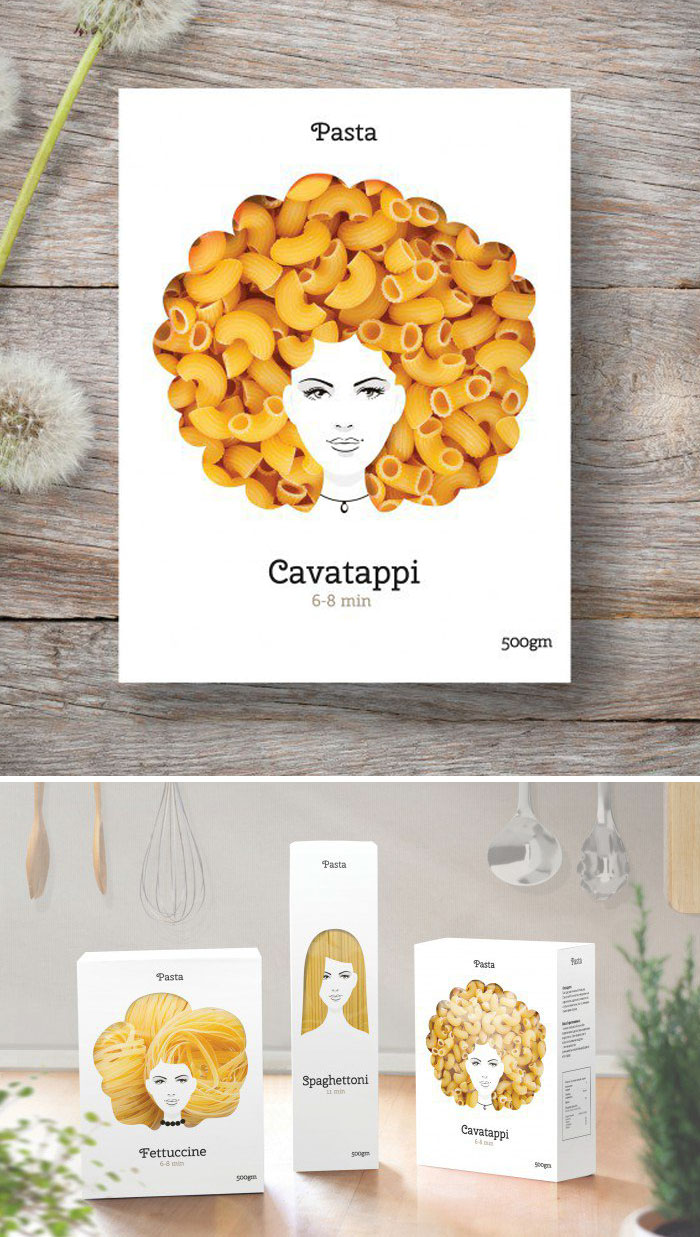
One of the biggest advantages of using windowed packaging is its ability to endorse your food brand among a number of similar offerings. Windows is a proven tactic to increase the sales of your products. Designing the window food boxes attractively is a great way to advertise your brand. Now you need not spend hundreds of dollars on carrying out promotional campaigns. Wherever your packaging goes, it speaks for its identity. High-quality printing with fascinating artwork and an enticing logo can make your food brand recognizable among a number of people.
Custom packaging also allows you to print useful information about the product and its manufacturer. For example, in the case of cookies or other similar food items, you can print nutritional information, calorie count, and the number of servings on the cookie boxes. If the customers get aware of various aspects of your products before their purchase, it increases their satisfaction level and loyalty to your brand. The result is repetitive sales and long relationships with the customers.
Unlimited Options of Designs and Styles:
Window boxes are an excellent way to show off your product and make it more interesting. The customer can choose from various shapes, sizes, and styles for their packaging - all with thrilling artwork or fascinating images added on demand! It's also possible to have printing done right onto the plastic window which will enhance its elegance even further. You'll be pleased by how many manufacturers now use important details like brand logos when designing such windows because they know just what impact these elements may have in drawing people towards them.
Window boxes are a great way to display your product in an eye-catching manner. With the help of clever design, you can create different shapes like hearts and stars for specific items so that they stand out from other products on store shelves!
Benefits of windowed packaging in the Health and Beauty industry
The packaging reveals a lot about a brand. Showcasing your brand through packaging, both primary and secondary, is critical to building the brand image, perceived value, and the desire for the consumer to learn and want to buy your products. Adding a window to your packaging is a great way to showcase your product while providing consumers insight into your brand values and promise.
Brand image is paramount in all industries, but perhaps even more important when it comes to the health and beauty industry where mere looks influence and drive consumer decisions.
Here are just a few of the many benefits of using windowing in packaging of health and beauty products:
Provides a Realistic View of Your Product
Windowing inherently provides consumers with a real-life look into your product. Whether used in paperboard folding cartons or fully transparent plastic cartons, see-through areas of the packaging enables consumers to have an exact idea of your products’ color, shape, and other physical aspects. This realistic view of your product builds intrigue and buying impulses within consumers basics
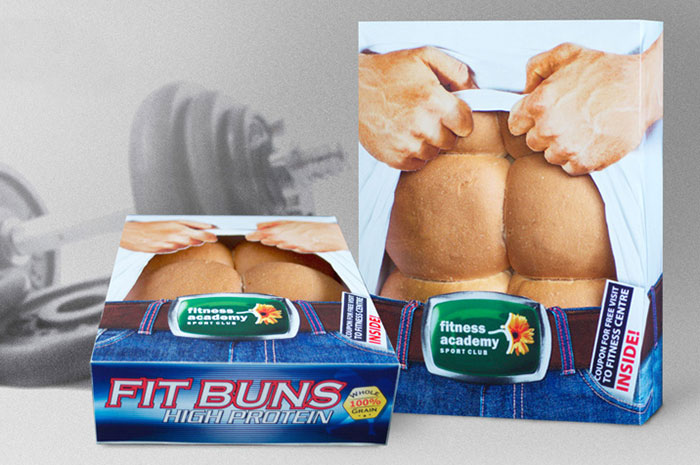
Showcases Primary Packaging for a Compounded Effect
When it comes to beauty products, looks can be everything. That’s why both primary and secondary packaging of beauty and cosmetic products, such as fragrances or high-end creams, are equally elegant and beautiful. Clear packaging allows consumers to see a product’s primary packaging, typically a gorgeous bottle or jar. This inside look into a product’s primary packaging, combined with beautiful secondary packaging, delivers an alluring and exquisite product presentation.
Creates a Heightened Experience for the Consumer
Window packaging not only helps to create a more immersive experience for consumers but also connects them with your brand on an emotional level.
Flaunts Your Product’s Best Features
Windowed packaging is a unique design feature that can allow brands to promote one-of-a-kind product features, gifts with purchase, or companion products. Every brand has its own selling points that they want consumers to know about so windowing gives them an opportunity for visibility in stores and online shopping sites where people are looking at pictures before buying anything.
Conclusion:
Windowed packaging designs can help brands achieve many things. From presenting their product in a more direct way to heightening the consumer experience, windowed packaging requires mastery. When thinking about paperboard folding cartons with a window or an overall plastic carton, it’s important to work with a supplier that understands this unique material. Suppliers must have the experience, expertise, and equipment to guide brands on the ‘do’s and don’ts’ of print, finishing, structure, and other production considerations.
One of the biggest advantages of using windowed packaging is its ability to endorse your food brand among a number of similar offerings. Windows is a proven tactic to increase the sales of your products. Designing the window food boxes attractively is a great way to advertise your brand. Now you need not spend too much money carrying out promotional campaigns. Wherever your packaging goes, it speaks for its identity.
About PrimePac
At PrimePac, we bring together design experts and brand innovators to create fresh ideas, customized packages, and fully efficient processes.
We design creative packaging solutions that cater to a diverse global audience with the in-house knowledge and network of experienced professionals to meet the demands of every type of client.
From our dedicated sales team and warehouse staff in the UK to the experts at our production facilities in China, all of our employees are guided by four core values at the heart of our business: integrity, innovation, passion, and engagement.
Network
With our team in China and UK working as one, we reduce inefficiency so that you deal with one streamlined team from manufacturing right to delivery.
Service support team located in Guangzhou, the manufacturing hub of China, providing rapid response, and local industry knowledge. Warehouse and 3PL net work located in Sydney, to provide rapid distribution, and delivery to your customers.

Coffee bean packaging - different package you can choose
The taste of coffee is so unique and intense that it needs to be sustained throughout its life from the roasting facility all the way up until you drink your cup. To do this, many different packagings have been developed by processing companies for their coffees in order to keep them fresh during transportation.
Yes, manufacturers package coffee beans to make it easier to transport them. Ensure that your cart isn’t full of loose coffee beans when going to the supermarket. And to ensure that they don’t pick up dust and dirt along the way.
Coffee beans have been packaging early adopters of flexible plastic but within this market, their preferences changed somewhat over the years. Some markets are very traditional and not keen on changing what they package in or how it looks so designers must adapt accordingly for them.
Coffee is a popular drink around the world, but what about their packaging? The design has to be eye catching in order for consumers with see how great they can taste. Innovative package designs have been created that stand out against other brands and help attract new customers by making them more original than others on sale at local stores or websites.

FOUR COMMON COFFEE BEANS BAG PACKAGING TYPES
While there is a wide range of coffee bags on the market, there are four types that each serve very different purposes.
# Stand-Up Pouches
The triangular shape of the stand-up pouch is designed to allow airflow and keep your coffee fresher for longer. With this type of bag, you can be sure that there won’t ever be any moisture build-up inside due to a sealing zipper which helps prevent spoilage! These types are very popular among small – medium-sized roasters who want high quality but also low prices.

The bottom gusset also allows the bag to stand up on the shelf and there is plenty of room for branding. A talented designer can work with this style to create an eye-catching bag.

# Flat-Bottom Pouches
Its square design allows it to stand on its own, giving off an elegant and modern appearance. It’s also got side gussets that allow for more storage in fewer bags. In turn, this makes it more efficient to store and transport, and better for the environment.
The only downside to this bag is that it’s more complicated to make, so it tends to be a little pricier. Roasters need to weigh up the advantages in branding and freshness against the cost and decide if it is worth it for them.
# Side-Gusset Bags
The side-folding coffee bag is a popular choice for those who need to pack many grams, like 5 lbs. This style provides strong durability and can fit into smaller spaces while still remaining weather Resistant.
Folding up your clothes makes it easier than ever before possible when traveling with just one carry-on!
These types of bags tend to have a flat bottom, meaning they can stand on their own – when there’s coffee inside them. The empty bags can only do so if they have a folded bottom.
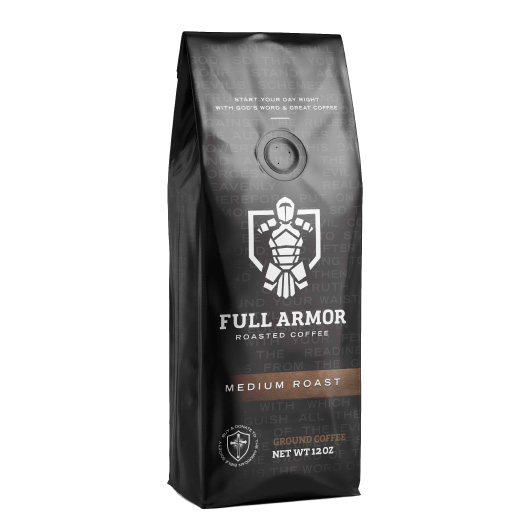
They are printable on all sides, making them easy to brand. They also tend to be less costly than other options. On the other hand, they don’t feature zippers. Usually, they are closed by rolling or folding them and using adhesive tape or a tin tie. Although they are easy to close this way, this isn’t quite as effective in keeping your coffee beans fresh compared to using a zipper would’ve been.
# Flat Pouches
These bags come in many sizes, but they are most commonly seen in single-serve packaging. If roasters want to have a small bag, like a sample for their customers, they can choose this kind of bag.
These small bags can be printed on the entire surface, offering good branding opportunities. However remember that this type of bag needs support in order to stay erect; you will need a platform or stand if your display it at an exhibition booth for example.
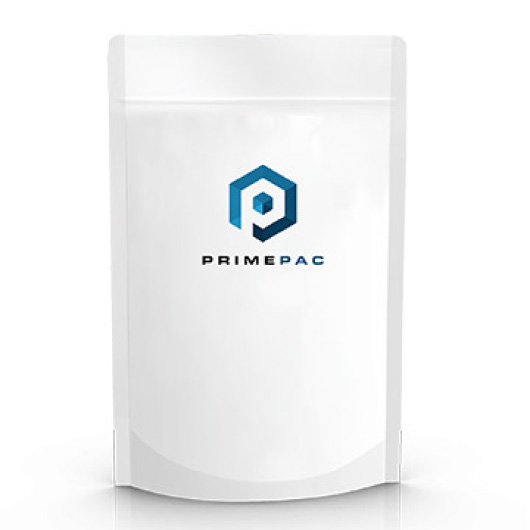
# BAG-IN-BAG (BIB)
Fractional packs of coffee can be packaged bag-in-bag into a larger package for food service or bulk sale purposes. Modern coffee packaging machines can form, fill, and seal the smaller frac packs and subsequently package those into a larger outer wrap on a single bag-in-bag machine.
Coffee beans packaging factors - Coffee freshness factors
The coffee you buy in stores and cafes are already fresh, but for shipping purposes or if your end-users will be consuming it immediately after opening the package – modified atmosphere packaging (MAP) options can help.
The most popular modified atmosphere packaging system is one-way degassing valves, which allows the natural build-up of carbon dioxide in freshly roasted coffee an escape route while not letting COFFEE FRESHNESS KILLERS like oxygen, moisture, or light inside the bag.
Other modified atmosphere packaging options include nitrogen gas flushing, which displaces oxygen in the coffee bag before filling, and the use of You can choose to use one type of MAP in your coffee bean packaging design or many, depending upon your needs. For most modern coffee packaging applications.
The coffee beans packaging process
Whether you plan on hand-filling or automating with COFFEE BEANS PACKAGING EQUIPMENT, we recommend choosing a bag style that has enough space for your scoop and equipment.
Also note that Hand-packing coffee bags is time-consuming and laborious, which leads to lower output. Automated bagging equipment can be expensive but it has many benefits such as increased accuracy with less work on your part!
Coffee packing machines have changed a lot in the last few years. Fully-automated solutions can now operate at high levels of accuracy, so you won’t have to worry about overfilling or underfilling your bags anymore! You’ll also be able to increase production rates exponentially without worrying too much if suddenly receiving large orders – just scale up as needed when things get busy around here.
The most noticeable coffee beans packaging trends:
#Sustainability
Many consumers are conscious of their purchases and the effect they have on the environment. Building trust with these consumers is done by reducing the impact the product and packaging have on the environment. And just as important, demonstrating this impact on the packaging itself! Earlier we gave the example of packaging concepts moving from aluminum to metalized PET.
#Premiumization
During the recession, convenience kept the instant market afloat. But the last few years have been good for the coffee market, and now we see instant coffee improving both the quality of its product and packaging to give sales and brand recognition a boost. For example, we see companies investing in better inks, lacquers, or varnishes.
#Marketing campaigns and their effect on packaging updates
Growing your brand can be difficult, particularly in the crowded coffee marketplace. One way brands choose to increase their market share is by offering variations on classic coffee products. We are also seeing more and more (short) branding campaigns that require frequent changes in packaging.
Coffee beans packaging convenience options:
Zippers
In comparison to other forms of packaging, zippers provide an effective barrier against staling. The zipper can be opened and reused after opening which makes them one of the most popular options among consumers who want convenience in their grocery shopping experience without sacrificing freshness or quality.
Ties or tape
Popular in the coffee industry are tin tie and tape down closures. These reclosable options can be employed either independently or together on your coffee bean packaging machine. This choice is not as airtight as a zipper but is still a popular look for stand-up coffee packaging bags.
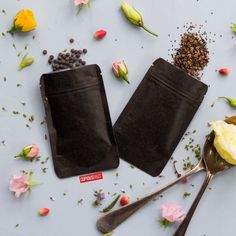
Minimal package design
Consumers are already overwhelmed with choices, visuals, and data. Make it easy for them to select your coffee with minimal use of graphics and bold, solid patterns in your coffee bag packaging design.
What else factors you need to consider about coffee beans packaging:
The Filling Process:
When it comes time for you to choose which bag will work best, consider how much space is needed and what type of opening mechanism there are. The bags with small openings may take longer than those that have wider ones because they need more attention during the filling process.
A Degassing Valve:
Sealed bags without a valve usually inflate and can even explode. A degassing valve allows the carbon dioxide that roasted coffee releases to escape the sealed bags. It’s a one-way valve: carbon dioxide goes out, but oxygen doesn’t come in. However, keep in mind that your bags need to be completely sealed for this to be effective, so make sure to invest in a good heat sealer.
A Tear Notch:
This simple addition will allow you to access your product better and more quickly.
The Supplier:
Will your supplier give you genuine advice? What will happen if there is a problem? Choose a reliable supplier, you need to know more about their qualifications, visit their website through the Internet, be sure about the product quotation, and check the feedback from other customers and the quality of the product.
Therefore, you can trust PrimePac
About PeimePac
At PrimePac, we bring together design experts and brand innovators to create fresh ideas, customized packages, and fully efficient processes.
We design creative packaging solutions that cater to a diverse global audience with the in-house knowledge and network of experienced professionals to meet the demands of every type of client.
From our dedicated sales team and warehouse staff in the UK to the experts at our production facilities in China, all of our employees are guided by four core values at the heart of our business: integrity, innovation, passion, and engagement.
Network
With our team in China and UK working as one, we reduce inefficiency so that you deal with one streamlined team from manufacturing right to delivery.
Service support team located in Guangzhou, the manufacturing hub of China, providing rapid response, and local industry knowledge. Warehouse and 3PL net work located in Sydney, to provide rapid distribution, and delivery to your customers.

Pet food packaging: trends and design in 2022
Pet food packaging: trends and design in 2022
As the baby boomer’s ownership of pets declines, pet food packaging design turns its attention to millennial and Gen Z consumers. These young generations are rapidly redefining what it means to be a “pet parent,” including everything from caring for their animals as well as how they shop for them with new trends emerging every day.
Millennial shoppers continue to favor healthier and more sustainable choices for their food, but when it comes down to choosing what they buy at pet stores there is one thing above all else-quality. They are willing to pay an added cost in order to get these benefits that older generations took without thinking about them. According to a global study conducted by Nielsen, nearly three-quarters of millennials say they are willing to pay extra for sustainable products.
The pet food packaging market is one that’s experiencing growth and popularity. One reason for this sudden increase in interest? The a growing number of people who view their pets as companions, rather than just animals to CARE FOR! In addition, there has been an increased awareness among owners about maintaining healthy lifestyles with our four-legged friends by focusing on what they eat – which means you need advanced spillsafe or premieresome type boxes so your pup can stay happy.
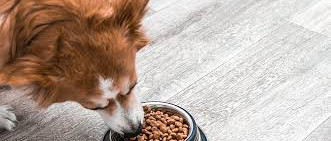
Gen Z especially cares about the environment, with 55% of them saying they will pay higher prices for products and services from companies that are committed to a positive social impact.”
In addition to sustainable development and environmental impact, young consumers are also looking for pet foods that provide pets with superior taste and quality experience, and are labeled with healthy, natural ingredients. Pet parents are also seeking the convenience of convenient and easy-to-use packaging.
Pet food packaging situation right now:
According to the report “Pet Food Packaging Market – Growth, Trends, and Forecasts (2022-2026)”, the pet food packaging market is valued at USD 10.1 billion in 2022 and is expected to grow to USD 12.9 billion by 2024 and grow at a CAGR of 7.74% during the forecast period (2022-2026). With pet owners wanting more protective, informative, and tasteful packaging, manufacturers are pushing to improve labeling, and produce more intelligent pet food packaging.
Packaging is playing a key role in the strong growth of the pet food industry, especially when it comes to premium products. The bag or container allows manufacturers to stand out from dog and cat owners who want sustainable options, personalized pet diets, and even human-friendly ingredients.
Trends to pet food packaging in the future
# Sustainable development
The sustainable development of pet food is not only the sustainability of its ingredients-packaging plays a key role in the environmental characteristics of products. According to a Mintel survey, 29% of American adults between the ages of 18 and 22 said they specifically bought environmentally friendly products.
Using intelligent design and material selection, there are several ways to reduce the environmental impact of packaging. Look for packaging that is lightweight and usually uses less material. In addition, ensure that these materials come from renewable and sustainable sources, such as cardboard made from responsible forests or plastics made from plants such as sugar cane.
The most important sustainability aspect of pet food packaging is its ability to protect our delicious and healthy products from exposure. Package designers have created a variety of protection methods, like sterile or cooking cartons which can extend shelf life without refrigeration!
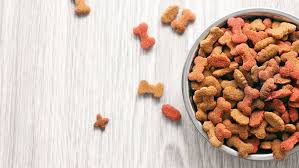
From the moment you purchase your dog or cat food, it’s important to think about how long its packaging will last. The best brands not only use recycled paper but also package their products in biodegradable containers so they can be easily broken down by bacteria during waste treatment processes without blocking any other steps along this journey.
# Taste and quality
With the growing concern for food safety, quality, and taste in pets many pet parents are looking at what their animals prefer when it comes to feeding time. Four out of ten dog owners will take into consideration how well-tasting an ingredient is before choosing which brand makes up their dinner plans; however, this trend doesn’t seem quite so important among cat foods buyers with 31%.
As further evidence of taste trends, pet food toppings or broths have become a growing part of the pet food industry, and currently, 12% of American cat and dog owners buy these foods. Mintel’s research shows that adding a bowler hat to dry or wet food can customize the diet experience for pets and can increase nutritional value.

Many pet parents are looking for organic and natural ingredients in their animals’ food. The rise of these “free” claims on the label has consumers excited about buying more vegetarian-based foods, which accounts for nearly 29% growth from last year alone.
# Label
Clean labeling is another area where pet food trends strongly reflect human food trends. The trend in cleaning labels is to list short, easy-to-understand ingredients on the label. In 2022, 75% of American consumers agreed that the fewer ingredients in food, the healthier; according to a survey, nearly 50% said they prefer foods without artificial additives.
What’s more, many pet owners want their dog or cat food to highlight real meat as its first ingredient. A recent survey found that 40% of dogs and 35 percent of cats are buying diets based on this factor alone.”
# Flexible packaging
Flexible packaging, such as single-serve or convenience-sized food pouches can be customized to hold different products and are portable. They also help keep the product fresh giving it longer shelf life.
Not only does flexible packaging offer a safe barrier for pet food but it also eliminates waste due to its all-in-one nature.
New Packaging Styles to the U.S. Market
Flexible pet food packaging, like stand pouches for pet treats and big bags for dog food, is still a relatively new concept in the United States. Traditionally, animal feed and associated products have been packaged in large boxes, flimsy bags, or rigid canisters. New developments overseas have pushed flexible packaging to the forefront, making it the preferred choice for highly influential modern brands across the globe. Companies that utilize intriguing, fashionable packaging that is sleek and highly functional are drawing in new customers and reshaping the marketplace in exciting ways.
We’re seeing more and more pet businesses using unique packaging styles for their food and treats because they stand out from the competition and draw in consumers. Many people are now feeding smaller breeds of dogs and cats, which means companies need to pay extra attention when designing their packaging. Trade shows have seen an increase in this trend as well; single-use feasts for these pets come with a package that can easily be stored or thrown away after use. New pouch styles can be custom-tailored to fit nearly any size product while keeping air out, prolonging the shelf life and freshness of the food inside. Utilizing these inventive types of all-in-one packaging cuts down on extraneous waste while providing a strong but pliable barrier that maintains the quality and integrity of the pet food.
Why Pet Food Packaging Design Can Make or Break Your Brand’s Success
Pet food packaging design trends closely mirror those we see in “human food” categories. Demand for healthier and more sustainable options is driving change in the food packaging industry as a whole, and pet owners tend to include their pets in the healthier, more environmentally friendly food purchasing decisions they make on behalf of their families. They want their pet food to be “just as good” as the food they eat.
These decisions are most often made on the spot while standing in front of a supermarket shelf, so packaging design makes all the difference between your product being put in the cart or not.
Here are some of the top strategic questions that inform our customers’ pet food packaging designs:
– Is the package safe, with excellent shelf stability and barrier control? The structural design of your pet food packaging is as important as its aesthetic to keep pets safe and avoid damaging recalls.
– Is the package convenient? Will consumers easily be able to carry it home and effectively reseal it from first use to end-of-life?
– Does the structural design of your pet food packaging enable easier and more cost-effective transportation and warehousing?
– Is the package sustainable—either recyclable or fully biodegradable?
These years, we’ve seen a healthy growth trajectory in premium pet food. This is an indication of greater opportunity and competition for manufacturers- with one major difference between brands being their packaging design.
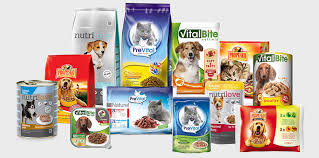
Conclusion:
The entire pet food packaging industry has undergone several much-needed changes in the last few years, and adhering to new regulations, upholding standards of quality, and working with pet products companies to best market and reflect their brands via their product’s container has propelled the marketplace into an exciting new direction.
The packaging is no longer regarded as an afterthought, and suppliers of innovative package solutions have become an integral part of a business partnership and team. Your product’s package is the first thing people see, after all, so whether you’re at a trade show, conference, demo booth, investors’ meeting, or in a store aisle, becoming a leader in reshaping the world of pets begins with staying up to date on the latest trends, technologies, and strategies for successfully selling your pet products.
About PrimePac
At PrimePac, we bring together design experts and brand innovators to create fresh ideas, customized packages, and fully efficient processes.
We design creative packaging solutions that cater to a diverse global audience with the in-house knowledge and network of experienced professionals to meet the demands of every type of client.
From our dedicated sales team and warehouse staff in the UK to the experts at our production facilities in China, all of our employees are guided by four core values at the heart of our business: integrity, innovation, passion, and engagement.
Network
With our team in China and UK working as one, we reduce inefficiency so that you deal with one streamlined team from manufacturing right to delivery.
Service support team located in Guangzhou, the manufacturing hub of China, providing rapid response, and local industry knowledge. Warehouse and 3PL net work located in Sydney, to provide rapid distribution, and delivery to your customers.

Shaped pouches packaging - New trends in packaging industry
With standing pouches becoming more popular each day it’s important for grocery stores and brands alike to stay ahead of their competition.
The packaging industry has seen an upgrade in all different kinds of shapes, sizes, and designs. With new international brands making their way into this market sector there is no shortage when it comes to variety for consumers looking forward to or trying something fresh.
The custom-shaped pouches can pack various products from liquids to dry fruits. These come with various closures, from shaped zippers to spout covers and more! The shape is what sets it apart on the shelf so you’ll trust not only do customers notice but also buy what they see right away.
In this article, you’ll know what’s shaped pouches? What is the advantage of shaped pouches and how’re the ways to use shaped pouches in marketing!
# Environment-Friendly:
The environmental cost of production has been a major concern for many years and it will be an act of generosity, wisdom as well thriftiness to look into new methods that can reduce our usage. One way you could do this would involve using less plastic when packaging up raw materials. These packaging formats are an amazing way of protecting our environment as they help save capital on raw material costs as it consumes less plastic to produce these stands up or spout pouches than those rigid bulk jars.
Shaped pouches are named according to their main feature, i.e. shape. They have an irregular shape compared to regular pouches. Today, brands are using unique shapes for their packaging to attract consumers, increase brand awareness, and in many cases better function as packaging.
What’s shaped pouches?
Shaped pouches are packaging pouches that are manufactured in such a way that they come in various shapes and sizes. A lot of product sellers use them because they come in shapes that would bring out the aesthetics of their product and make it more appealing.
Shaped pouches can be designed to stand up or flat as a three side seal pouch – whatever shapes packages suitable to make your products best and attractive.
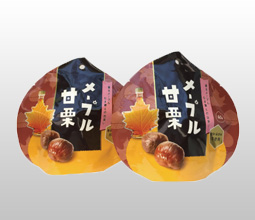
It is important for all food & beverage manufacturing firms to employ flexible pouch packaging methods because solid materials can be carried around in some ways but it’s impossible when the package has been broken. This is why it is important for all the food & beverage manufacturing firms to employ flexible pouch packaging methods to save their products and to increase their supply.
Wondering how? Here are some of the best perks that come with using bottle shaped pouches and spoutcaps for liquid or fluid content.
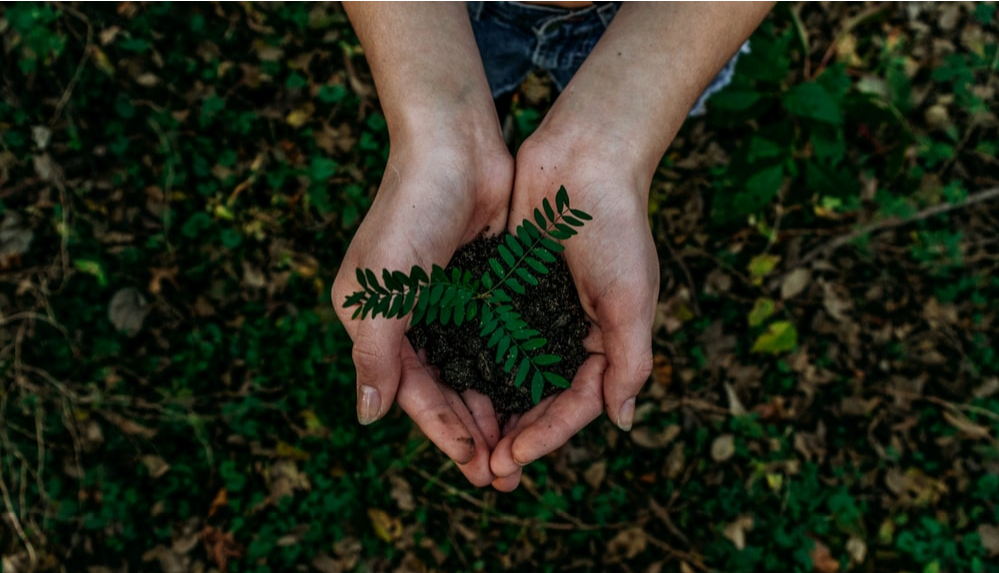

# More Choices:
Yes! This might interest you as this package offers the choice to shape it however we want and can be printed with all important information. Spout packaging is incredibly great even for edible content that’s suitable kids since they’ll easily pop up their own spouts without any hassle whatsoever.
# Low Cost-Involvement:
As mentioned earlier, these bottle-shaped or side gusset pouches help save money that you can invest in something efficient and more important. With this type of pouch, you can make sure to use fewer resources and raw materials which will result in a more efficient product.
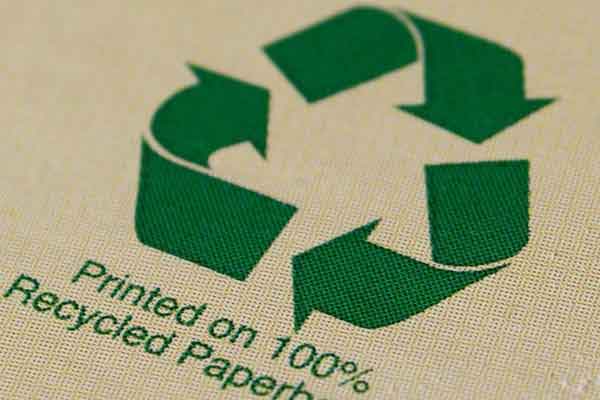
Ways to Use Shaped Pouches in Marketing
Shaped pouches can greatly enhance marketing efforts, allowing a company to differentiate from the rest. Here are some ways to use this modern promotion & packaging technique as a marketing tool.
Promote Shelf Products:
first of all, shaped pouches can be created in various sizes and shapes, being customized according to the customers’ feedback. Customers are more attracted to the design of a product that looks unique. For instance, you can create a toothpaste tube for toothpaste or a pasta tube for pasta.
Customized shaped pouches are a great way to make your product stand out. They can be created in different sizes and shapes, and customized according to the customer’s feedback. For instance, you could create toothpaste tubes for toothpaste or pasta rolls that look like they were made just for them with this one-of-a-kind of service.
Endless Printing Possibilities:
You can print your pouch using rotogravure, flexographic, or offset printing methods. This will allow you to create shaped pouches with vibrant colors and photos vivid logos or strikethrough letters.
Give Away Small Pouches at Events:
small pouches can be offered for free at an event, whether it is a presentation, exposition, trade show, or meeting. This is a good method to make your brand famous among potential customers.
Capitalize on the Power of Social Media:
Creating a Facebook fan page for your company and promoting the shaped pouches design will allow you to reach more people. The shape of these products makes them stand out in an overcrowded market, which is why they are sure not to go unnoticed by any customer.
Custom Shaped Pouches Are The New Way For Packaging:
Stand-up pouches might not be completely new in the packaging world, but it was sure to revolutionize the industry. Despite the success, there still exists the mass that is unaware of the importance of packaging and the opportunities they are missing out on by not cashing these. Pouch packaging is especially vital since the manufacturers of food items, chemicals and foodstuff like soup are often in search of leak-proof and spill-proof packaging.
Here’s a brief explanation as to why shaped pouches, spout pouches and other variants of shaped pouches are the ideal ones to suffice the specific packaging needs:
- The aesthetic quotient is high. They look great on the store’s shelf and have the ability to grab customers’ attention.
- Imagination drives the packaging, these have enough opportunity for you to work on.
- Shaped pouches are available in plenty of closure options, zipper closure, sliders, stickers, or reclosable zippers.
- The material used for the pouches may be plastic, or aluminum laminates, which offer outside protection and improves the freshness that breaks down once exposed to oxygen.
- The ease of use and convenience offered by these are incomparable, which makes them ideal for dry as well as wet content.
8 tips criteria to determine the sustainability of shaped pouches packaging.
First, the final packaging product should be safe, healthy, and beneficial both to the consumers and the community throughout its life cycle.
Second, the packaging product should be made from eco-friendly materials so that there is a slim chance of harming the environment.
Third, the packaging product should be optimally designed to perfectly optimize both materials and energy.
Fourth, the packaging product should meet the market criteria both for performance and cost-wise to squeeze out the maximum benefit of it.
Fifth, the packaging product is manufactured using clean production technologies, processes, and industry best practices complying with FDA rules and regulations.
Sixth, the final packaging product should optimize the very best use of recycled and renewable source materials.
Seventh, renewable energy should be the driving force for sourcing, manufacturing, recycling, and transportation of the final packaging product.
Eighth, the last but not least, it has to be made sure that the final packaging product that can be a pouch, bag, or some other type of packaging is recovered and utilized biological and/or industrial closed-loop cycles.
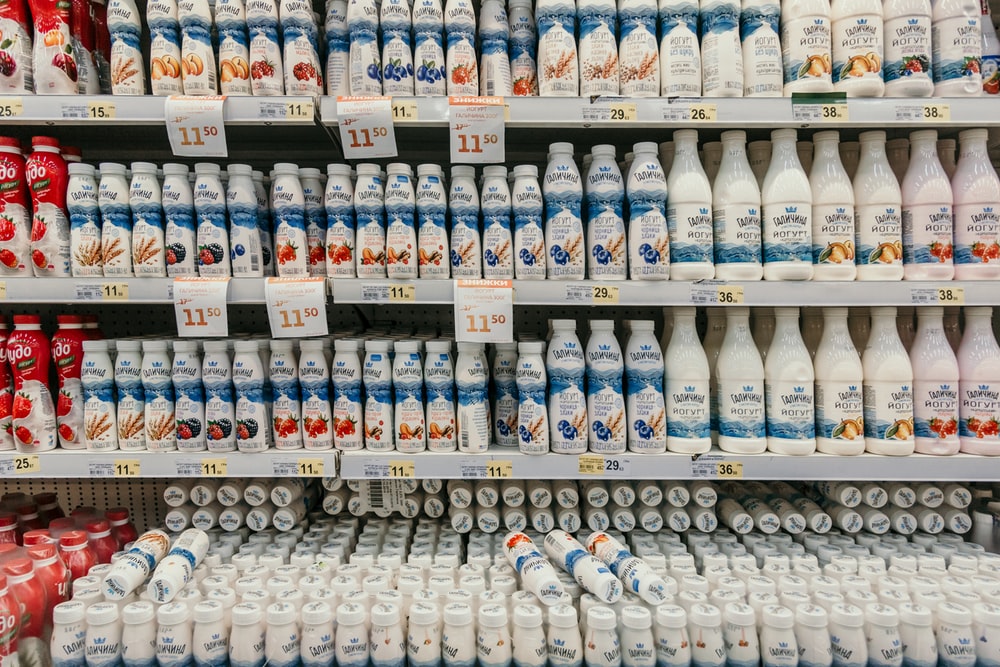
Advantage of shaped pouches packaging:
Shaped pouches packaging is customizable to the extreme.
It can be tailored to fit your needs. Manufacturers can virtually make the packaging of any shape and size to suit your product, brand, and other business needs. This ability gives manufacturers an edge over the competition.
Shaped pouches packaging is made from high-grade materials. PrimePac uses FDA (Food and Drug Administration) approved food grade materials that are contaminant-free and perfectly safe. Manufacturers can enhance this safety by including additional features such as ultraviolet protection.
With the rise of reusable packaging, manufacturers have seen an increase in sales. The features such as zip locks and spouts that are included with this type of design can make usage more convenient for consumers who want something quick without spending too much money on single-use products like plastic baggies or foil packs found at checkout counters today.
The gusseted bottom in flexible packaging expands when a product is put into it. This is a useful feature for liquid food product manufacturers who want something flexible, but durable.
Finally, flexible packaging is more environmentally friendly as it does not take many resources to produce these pouches. At the same time, being green does not hurt the pockets of manufacturers.
Spout Pouch Packaging is an innovative product for liquid or powder products. The spout design offers more convenience in use and the flexible material will significantly reduce logistics costs compared to rigid bottles.
Spout Pouch Packaging is a fairly new but already important development in liquid product packaging. The fact that these sachets protect the liquid contents from vapors, odors, moisture, pests, pets, air, and/or light (depending on the nature of the particular contents) only scratches the surface of why spouted sachet packaging is superior to most other packaging packages.
Conclusion:
Innovation and creativity in the packaging industry have surged in the last decade. Shaped pouches have become increasingly popular in this industry, revolutionizing everything we ever knew about packaging. This trend of using flexible pouches to promote a brand, a product, or a service, has not only captured the hearts and minds of the consumers but has taken over major stores’ aisles. Whether we’re talking about drink pouches or those used in the food, pet food, or pharmaceutical industry, these high-quality pouches allow for impressive graphics, taking visual marketing to a whole new level.
About PrimePac
At PrimePac, we bring together design experts and brand innovators to create fresh ideas, customized packages, and fully efficient processes.
We design creative packaging solutions that cater to a diverse global audience with the in-house knowledge and network of experienced professionals to meet the demands of every type of client.
From our dedicated sales team and warehouse staff in the UK to the experts at our production facilities in China, all of our employees are guided by four core values at the heart of our business: integrity, innovation, passion, and engagement.
Network
With our team in China and UK working as one, we reduce inefficiency so that you deal with one streamlined team from manufacturing right to delivery.
Service support team located in Guangzhou, the manufacturing hub of China, providing rapid response, and local industry knowledge. Warehouse and 3PL net work located in Sydney, to provide rapid distribution, and delivery to your customers.

Sustainable packaging industry in 2022
Introduction
Sustainable packaging has been one of the talking points over the past decade. Yet, the sustainable packaging industry started slow due to various factors. Fortunately, the development of the industry has made some breakthroughs recently.
Sustainable packaging industry: the new era
According to consumer trends, consumers are willing to pay more for green, but they will also buy more sustainably packaged products if there are more available and better-labeled products. Particularly with the presence of a Circular Economy. The sustainable packaging industry has met the new era.
As a result, many programs and organizations jump up and spread the idea. Companies pay more attention to the environmental impacts of their businesses. Various brands introduce sustainable packaging to enhance their brand value.
To find sustainable solutions, it is essential that we first design our packaging products for recycling. Designing with the end-user in mind and ensuring an available system or programs will be key factors when determining if a specific product can actually benefit from these features.
Here, we are going to talk about the sustainable packaging industry today.
Why we need sustainable packaging NOW?
Less environmental impact by the sustainable packaging industry
The issue of plastic pollution has been a long-standing controversy. Recently, it seems that we're finally starting to make some progress on this global problem thanks in part to awareness generated by media attention and concern for our oceans' health.
The abandoned waste is still present at landfills around the world with nearly five billion tons produced annually--and these statistics don't include all types or sizes of items discarded in them!
Also, plastic packaging cast a great impact on climate change. A report by CIEL (the Center for International Environmental Law) has shared the data.
By 2050, the cumulation of these greenhouse gas emissions from plastic could reach over 56 gigatons—10–13 percent of the entire remaining carbon budget.
For plastic packaging, which represents 40 percent of plastic demand, global emissions from incineration of this particular type of plastic waste totaled 16 million metric tons of CO2e in 2015.
(source: https://www.ciel.org/project-update/plastic-climate-the-hidden-costs-of-a-plastic-planet/)
Moreover, CIEL said the number does not include 32% of plastic packaging waste. Because the waste remains too difficult to calculate after disposal.
However, it is not easy to completely destroy existing plastic packaging. Because it costs even more than starting a new production. And improper ways to dispose of plastics also lead to huge environmental impacts.
Therefore, it's more crucial than ever to develop a sustainable packaging industry.
The environmental impact of plastic packaging has drawn the attention of a number of governments worldwide. A few regions even publish policies to support sustainable industries like this one.
Government policies support the sustainable packaging industry
In the UK, for example,
Unite to achieve the goal of 100% reusable, recyclable or compostable plastic packaging in the UK by 2025.
(source:UK Plastics Convention)
This aims to propel the sustainable packaging industry in the UK.
Sustainability has become more urgent than ever in the UK today. Especially under the national spreading recycling crisis currently.
And the UK Packaging Convention will deliver the 100% target.
The UK Packaging Convention is a long-standing organization that has been vital to the reduction of environmental impacts from consumer packaging in Great Britain since 1993.
As an industry leader, PrimePac strives for sustainable solutions and best efforts when it comes to its business operations.
On the other hand, the BBC reported that the UK government implemented new controls on single-use plastic products in April 2020.
Also, a plastic packaging tax came into effect in the country in April 2022.
Raise brand value by sustainable packaging
More and more consumers tend to buy from companies with sustainable packaging.
A study by Unilever revealed that 21% of consumers choose brands with sustainability marks on their packaging.
The study asked 20,000 adults from five countries. This represents a potential untapped opportunity of €966 billion out of a €2.5 trillion total market for sustainable goods.
The environment is a major concern for many people, and environmentally friendly companies have seen an increase in profits due to their efforts.
The result of this global survey released by Tandberg shows that 53% prefer buying from these brands over others with less polluted environments because they care about what goes into our bodies as well!
Seek help from a UK company in the sustainable packaging industry.
What makes sustainable packaging?
The definition of sustainable packaging
Sustainable packaging is the development and use of packaging which results in improved sustainability.
(source: https://en.wikipedia.org/wiki/Sustainable_packaging)
In other words, it means packaging with zero/less impact on the environment. Typically, recyclable, compostable, and reusable packaging.
Types of sustainable packaging
Recyclable/reusable plastic packaging
Plastic landfill is a major contributor to environmental problems. But with your eco-friendly ideas, such as reusing them for instance when you have new gadgets in the box and sending it out or taking them on vacation then this can be sustainable! All that needs doing now are some small changes that will make big impacts down the line.
Recycle your plastic packaging if it doesn't fit any of your packaging portfolios. Take them to the recyclable center after use. Or at least put them in the trash cans, especially for plastics.
Recycling is a good thing, but even better than that-buy recycled products. When you choose plastic packaging made from recyclable materials like paper or cardboard it will help save our environment by reducing carbon emissions.
Therefore, recyclable/reusable plastic packaging is an easy option for sustainable packaging. Remember to use them as much as possible.
There are more eco-friendly packaging ideas here.
Paper-based packaging
With its household name, paper-based packaging is one of the most common alternatives to plastics.
The leftover pieces of the main paper material continue on in their cycle, becoming scrap paper that can be used for a variety of products like paper sacks, fiberboard, and more.
Moreover, many companies are adopting and developing paper-based bottles as containers for coffee, soft drinks, and other beverages. You can easily find paper coffee cups when you try to get some coffee in many coffee shops today.
All in all, paper packaging is a wise choice with eco-friendly packaging ideas. It is a competitive alternative over the other packaging solutions.
Check the paper-based packaging solutions.
Bio-plastic packaging
The popular bio-based plastics family is called PLAs, which are made from the starch of fermented plants. Unlike traditional plastic packaging that will always end up in landfills or incinerators if not recycled, these new materials have a very specific purpose:
They provide moistureproof protection for goods and can even decompose after time thanks to their unique origin.
But there’s one downside—they require maintenance if left unchecked because abuse may cause environmental impacts such as increased demand leading to shortages in food production space (with increasing population).
Therefore, whatever materials to use, awareness of environmental impact remains the most critical.
Leading companies focus on the sustainable packaging industry
The Australia-based Amcor Group is a multinational packaging leader. Now, Amcor focuses on packaging products of recyclable and reusable materials. In January 2018, Amcor has pledged to develop all its packaging products to be recyclable or reusable by 2025.
Pact Group Holdings Limited is the market leader in rigid plastic packaging. It has established its fame in the UK. The Pact Group focuses on expanding the capability of reuse and recycling. It collects and processes plastic resin with a yearly amount of 19,507 tons as a result.
Given the sustainable packaging trend, many other UK packaging companies are offering sustainable packaging solutions. PrimePac is one of them in the sustainable packaging industry.
Thank you for reading. But this is not the bottom line. Some more ideas about sustainable packaging trends are below.
Sustainable Packaging Industry Trends in 2022
Optimized packaging solutions
Optimized packaging solutions are guaranteed to be safe for both the environment and your customers while reducing waste.
This can help you save money on unnecessary plastic or other materials, which means more room in our recycling bins!
For example, you want your jelly in a pouch with an accurate size. You can always put it in bigger pouches though. But doing this can avoid customers from posting negative comments like an oversized bag and little to drink on their SNS.
Meanwhile, choosing the proper solutions requires both knowledge and experience in the packaging field. If you need help, feel free to let us know.
Bio-ink makes it fully green
Plastic packaging has been popular until today. One of the reasons is the combination of various colors. While there are limits in the colors for most fully compostable packaging. Kraft printing, for example, typically has a maximum of 2 colors.
Some might question, there are bunches of boxes in the market with colorful covers. Pretty true.
However, we are talking about fully compostable, including the ink. Not every box or paper-based packaging comes with bio-ink. Some of the ink can harm the environment and hurt humans.
Meanwhile, the limit of 2 colors in the packaging offers only a few options in branding.
Fortunately, PrimePac now offers a full-color printing solution on its whole bio-compost line. And of course, that comes with bio-ink.
Even water-based adhesive we apply does no harm to the environment if buried into the ground.
Conclusion
Sustainability packaging is now the keyword in the packaging industry. However, getting sustainable packaging solutions and offering them is still a challenge. Especially for many small and medium businesses.
We place great importance on sustainability and its benefits to our existence, as well as the ultimate business benefits to our goal-driven company. Therefore, we will invest in sustainability in 2022 and continue to look for options for our customers in terms of products and packaging.
We understand that. And we are ready to offer you a hand. Tell us your concerns and check our cost-effective sustainable packaging solutions.

